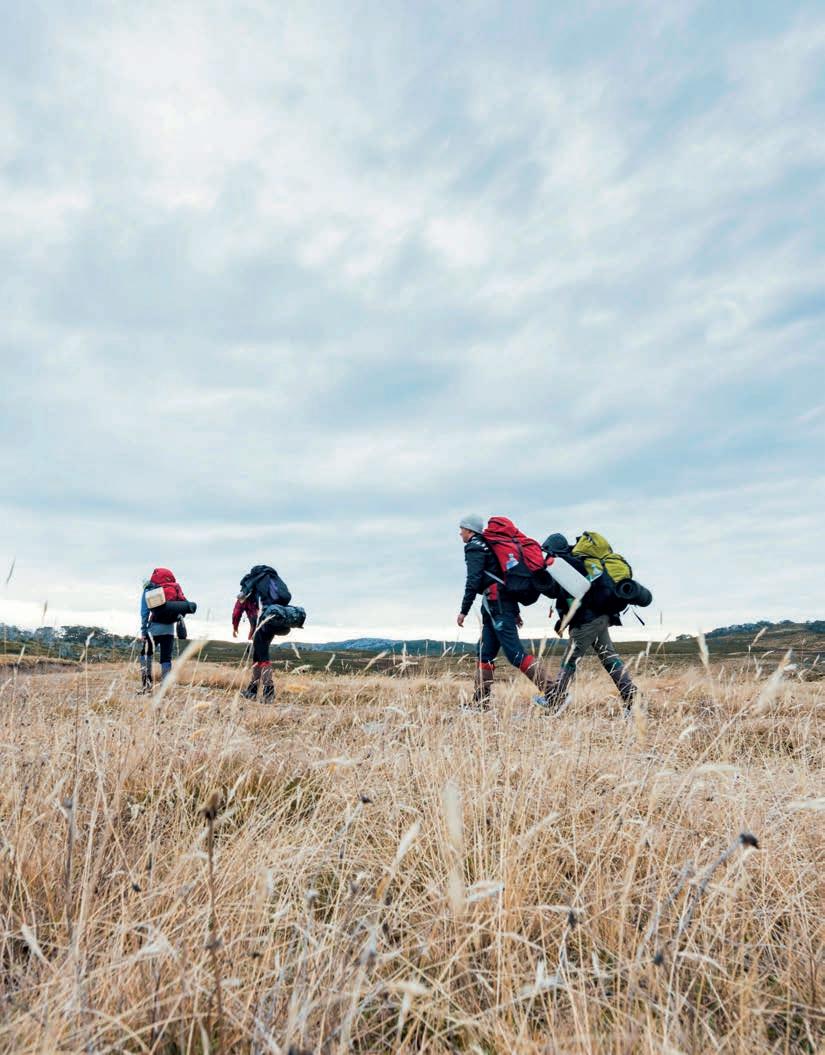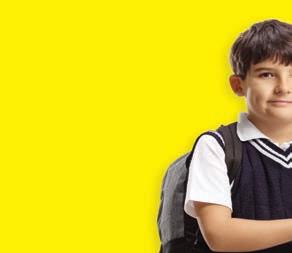

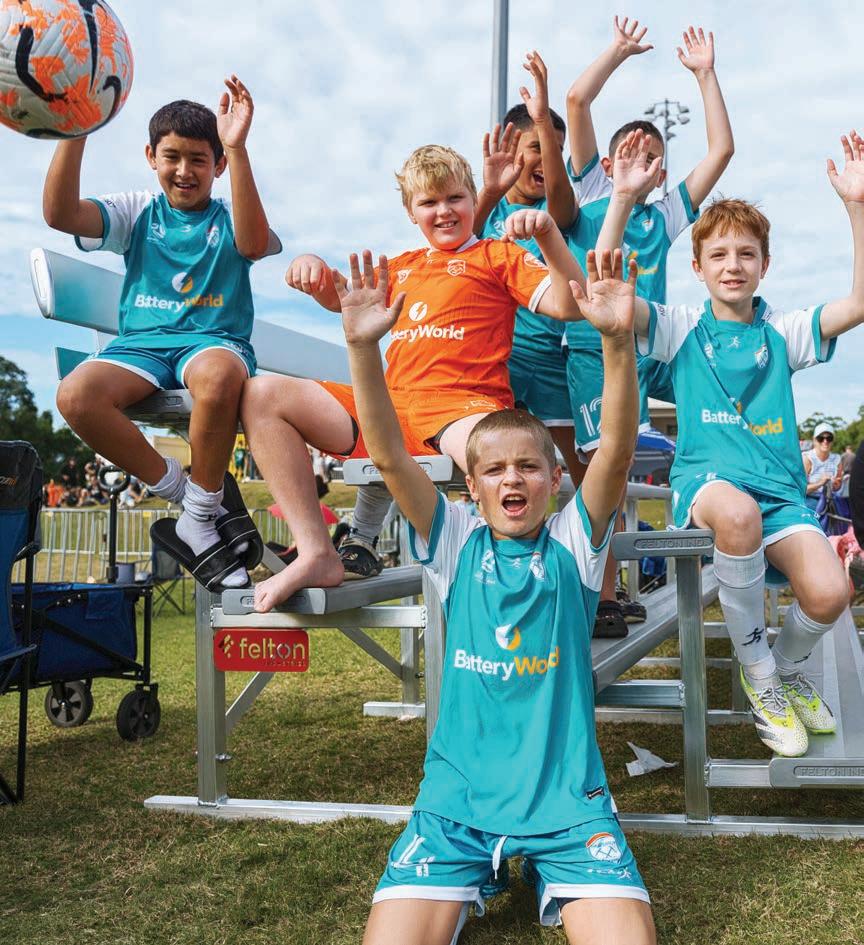






The teaching profession has witnessed countless shifts in the education landscape in the past two decades, but nothing quite compares to the emerging crisis of Secondary Traumatic Stress (STS) among educators.
This issue isn't about another workplace challenge. It's about the profound emotional toll teachers endure daily, absorbing students' traumatic experiences while attempting to maintain their own psychological wellbeing.
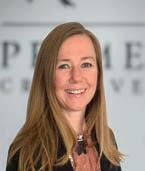
Dr Adam Fraser's groundbreaking research, shared in this issue's Hot Topic, reveals a stark reality: nearly 40 per cent of teachers are considering leaving the profession, not because of curriculum changes or administrative pressures, but because of the cumulative emotional weight they carry.
Imagine walking into a classroom knowing you'll hear heart-wrenching stories of neglect, abuse, and family dysfunction. Imagine being expected to teach mathematics while simultaneously being a counsellor, social worker, and emotional support system. This is the modern educator's reality.

The most shocking revelation isn't just the prevalence of STS, but how systematically unprepared we are to support our teachers. With only one undergraduate program in Australia addressing secondary traumatic stress, we're sending educators into emotional minefields without proper training or protection.
These aren't just statistics. They represent real professionals experiencing genuine psychological strain. Teachers are absorbing trauma like emotional sponges, with stress accumulating over years, not diminishing with experience.

Our education system has fundamentally transformed. Teachers are no longer just knowledge providers; they're frontline mental health supporters for an entire generation. Yet our support structures remain inadequate. This isn't about blame. It's about recognition and action. We need comprehensive training programs, robust support mechanisms, and a cultural shift in how we perceive educators' emotional labour.
The 'diamonds' in this research – those educators who maintain resilience despite high trauma exposure – offer hope. They demonstrate that with proper strategies and support, teachers can not only survive but thrive in challenging environments.
As a publication committed to educational excellence, Education Matters is committed to amplifying this critical conversation. We're not just reporting a problem; we're helping to amplify advocacy for systemic change. To our educators reading this: you are seen. Your emotional experiences matter. Your mental health is paramount. To policymakers and educational leaders: it brings new understanding to a problem that can now start to be addressed. The future of education depends on how we support those who shape our future generations.
Happy reading!
Rhiannon Bowman Editor – Education Matters rhiannon.bowman@primecreative.com.au
Chief Executive Officer: Christine Clancy christine.clancy@primecreative.com.au
Publisher: Sarah Baker sarah.baker@primecreative.com.au
Managing Editor: Myles Hume myles.hume@primecreative.com.au
Editor: Rhiannon Bowman rhiannon.bowman@primecreative.com.au
Art Director: Michelle Weston
Media Bookings and Advertising: Kylie Nothrop kylie.nothrop@primecreative.com.au 0422 046 299
Client Success Manager: Sabrina Zor
Education Matters is a division of Prime Creative Media Pty. Ltd. 379 Docklands Dr, Docklands, VIC Ph: (+61 3) 9690 8766
Subscriptions
Education Matters is available by subscription from the publisher. The rights of refusal are reserved by the publisher. Ph: (+61 3) 9690 8766 E: subscriptions@primecreative.com.au
Articles
All articles submitted for publication become the property of the publisher. We reserve the right to adjust any article to conform with the magazine format.
Cover Image
Kingsway Christian College




www.educationmattersmag.com.au
www.educationmattersmag.com.au/subscribe/
Copyright Education Matters is owned by Prime Creative Media Pty. Ltd. and published by John Murphy. All material in Education Matters is copyright and no part may be reproduced or copied in any form or by any means (graphic, electronic, or mechanical including information retrieval systems) without the written permission of the publisher. The Editor welcomes contributions but reserves the right to accept or reject any material. While every effort has been made to ensure the accuracy of information, Prime Creative Media will not accept responsibility for errors or omissions or for any consequences arising from information published. The opinions of the magazine are not necessarily the opinions of, or endorsed by the publisher unless otherwise stated. All photographs of schools (including students) depicted in feature articles and advertisements throughout this magazine have been supplied to the publisher (and approved) by the contributing school. All material supplied by schools is done so with the understanding that such images will be published in Education Matters and may also appear on the our website: www.educationmattersmag.com.au.
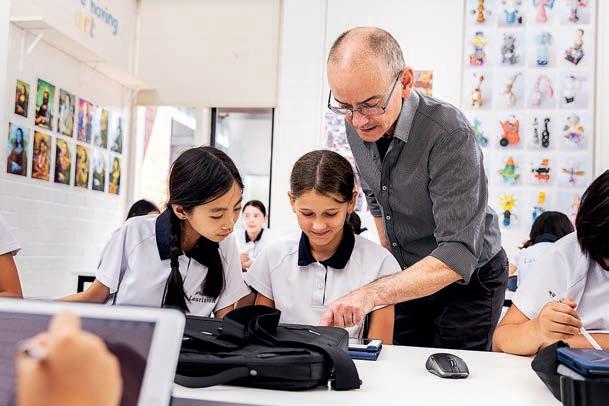
20 nnovationtakes i ht Melbourne gears up for the National Education Summit in August.
23 Teens screensan mentalhealth
Now is a critical moment to support teens in building healthier digital habits.
24 Connectionssparkpowerful professional rowth
Lauriston Girls School is improving teaching practice with evidence-based strategies.
26 uil in lifeskillsthrou h se uentialpro rams
The Outdoor Education Group leads students on a journey of self-discovery.
28 Stu entlea ership u les to thesurface
Rosebank College challenges traditional approaches to water consumption.
29 Thou ht-lea ersi nitecuriosit an expan stu ents hori ons
A lecture series has evolved into a dynamic platform for raising contemporary issues.
30 Threelocations threeuni ueexperiences
C Camps offers diverse facilities that inspire students and challenge boundaries.
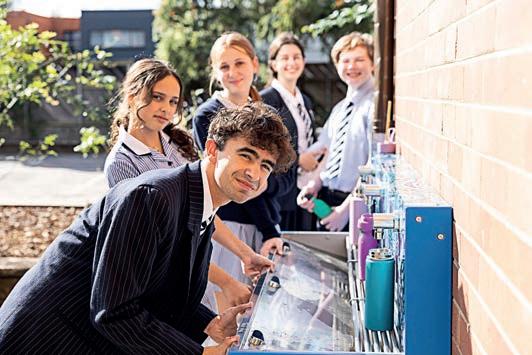
the principles of sustainable design.
33 nnovationre efinesaccessi ilit in new range
Felton ndustries Avoca range reimagines outdoor furniture with precise engineering.
34 Schoolsem racerespectful relationshipsresources
Radford College is equipping students with essential skills in consent, healthy relationships, and personal development.
36 Colla orativepartnership rives e ucationaltechnolo forwar
Kingsway Christian College is partnering with JB Hi-Fi Education to enhance learning and teaching.
40 h schoolsareem racin mo ilevirtualrealit
A Melbourne-based company is helping students explore innovative career paths without leaving schoolgrounds.
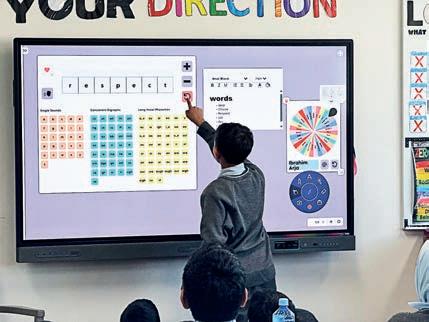
41 E tech u ers ui e iscover what you may have missed from some of the expo’s leading exhibitors.
52 ea ershipan le ac
A genetic discovery led r Stephen Brown to contemplate the meaning of legacy.



















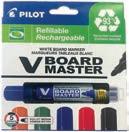









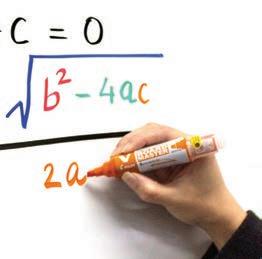






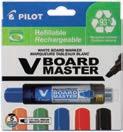















“Right now, Victoria’s public schools are the lowest funded in the country, and our teachers are the lowest paid.”
ictorian public school teachers, principals and education support staff are calling for the state government to commit to a per cent pay increase and improved conditions in the next ictorian Government Schools Agreement ( GSA).
The Australian Education Union (AEU) ictorian Branch has unveiled a stark comparison of salaries across the country, with branch President Mr Justin Mullaly saying low pay and public school funding cuts mean that the state government cannot rightfully call Victoria ‘the education state’.
ictorian students are set up for success when their teachers, principals and education support staff are supported to stay in the profession, Mr Mullaly said.
Right now, ictoria’s public schools are the lowest funded in the country, and our teachers are the lowest paid, with education support staff and school leaders also undervalued.
Mr Mullaly said there is a huge disparity in public school salaries between ictoria and every other state and territory.
For example, next year an experienced teacher working in Wodonga would be 1 , better off a year, or 2 a week, by crossing the Murray and teaching in a public school in Albury.
n 2026, an experienced ictorian teacher will be paid 11 ,06 compared to 1 ,422 for an experienced teacher in NSW. At the entry level, a ictorian teacher will be paid , compared to 2, 2 in NSW.

• modern and exible working arrangements
Only three in ten ictorian public school staff intend to stay working in public schools until retirement, and nearly 40 per cent are uncertain about continuing to work in ictorian public schools.
The government must get serious about addressing the workforce shortage in our public schools. That means decent pay and conditions to attract and retain our public school teachers, principals and education support staff, increased classroom supports and smaller class si es, Mr Mullaly said.
The AEU log of claims for the next GSA includes
• a per cent pay increase for all public school staff over the life of the agreement
• smaller class si es so every student can have greater individual attention and support
• significant improvements to working conditions, including workload reductions and less unnecessary administration requirements.
The AEU received 16 sub-branch submissions, representing the views of tens of thousands of teachers, principals and education support staff, to the union’s log of claims process.
Thousands of new members have joined the AEU since the beginning of the year, and hundreds attended a rally outside eputy Premier Ben Carroll’s office in June.
AEU members are highly engaged, ready to campaign for themselves and for the students they work with, Mr Mullaly said.
Public school teachers, principals, and education support workers are dedicated, hardworking professionals. They require the state government to back them in with the same dedication. EM
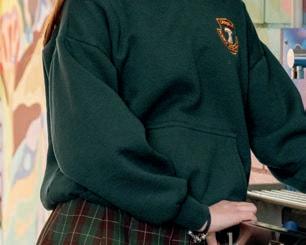
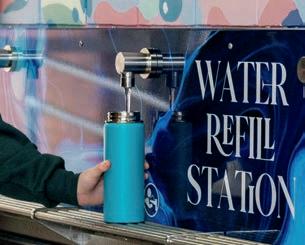







“It’s now taking longer to document a lesson than to teach it.”
Ms Amber Flohm, NSW Teachers Federation Deputy President
Teachers are spending far too much time on data collection and compliance paperwork while being starved of time for activities that directly benefit students, according to a report by the NSW Teachers Federation.
The latest analysis of a survey of 1 ,000 teachers was launched in July at the Teachers Federation conference and reveals educators are spending the majority of their non-teaching time on administrative tasks such as data collection and entry and programming compliance.
Meanwhile, work that teachers identify as having the greatest impact on students, such as professional learning, engaging with parents and carers, and collaborating with colleagues on curriculum development, is relegated to minimal time allocations.
NSW Teachers Federation eputy President Ms Amber Flohm said the findings show teachers are doing the wrong work at the expense of student outcomes.
t’s now taking longer to document a lesson than to teach it, Ms Flohm said. Teachers are spending
their evenings and weekends completing paperwork that serves no educational purpose while having no time for professional development that would genuinely improve their practice.
The survey results align with national data showing per cent of teachers cite workload as the primary reason they intend to leave the profession, according to the Australian Teacher Workforce ata released in June 202 .
However, not enjoying teaching continues to decline as a factor, representing less than one in five teachers considering departure suggesting educators still love teaching but are frustrated by administrative burdens.
Ms Flohm said many compliance requirements imposed by the epartment and schools exceed what the NSW Education Standards Authority (NESA) actually mandates.
NESA guidelines state there is no requirement for detailed teacher evaluation and re ection in compliance evidence, no requirement about how evaluation is completed, and no expectation that teachers write comments regarding each aspect of each lesson.

“Yet schools continue to impose these burdensome requirements, often going far beyond what’s legally necessary, Ms Flohm said.
The Federation argues the administrative overload is contributing to teacher shortages, particularly in regional areas where schools struggle to replace departing educators.
n July, 00 Teachers Federation delegates gathered in Sydney for the union’s annual conference to debate measures aimed at reducing unnecessary compliance and refocusing teacher time on student’s learning and teaching.
The union is calling for schools to strip back compliance requirements to statutory minimums and eliminate what it describes as layers of unnecessary bureaucracy imposed beyond NESA requirements.
Ms Flohm said the findings challenge recent policy directions toward standardised teaching approaches and pre-made curriculum materials.
Teachers don’t want to be delivery agents for someone else’s materials, she said. They want time to do the creative, intellectual work of adapting learning to their students in front of them and their specific needs. EM


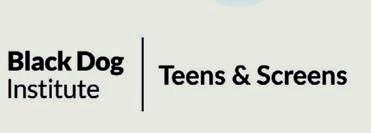










“Early
career teachers are often reporting a feeling of overwhelm and emotional exhaustion, creating doubt in their career choice.”
Ms Ebony Melzak, Monash School of Educational Psychology and Counselling
Having a say on school policies and curriculum, informal lunchtime socialisation, and validating experiences of imposter syndrome’ are among a raft of factors that could be leveraged by the education system to keep early career teachers in the job and address the teacher retention crisis, new research from Monash University suggests.
One in two new teachers will leave the job in their first five years, and to turn this around researchers are urging schools to act on the 41 factors that drive teacher belonging’.
While there are some academic and administrative factors like a proper induction, clarity about their role, and recognition of the importance of subjects they teach, the study found most of the factors that in uence teacher belonging depend on the relationships they build in the school. This includes practical and emotional support, respectful and trusting relationships with school leadership and colleagues, and forging a bond over shared experiences like feelings of doubt or being new teachers together.
The Monash research is a global scan of what contributes to teacher belonging across 1 countries including Australia, with findings that can be easily implemented in all Australian schools now.
Lead researcher Ms Ebony Mel ak, a Ph candidate at Monash School of Educational Psychology and Counselling, said the factors identified as driving teacher belonging should be considered a list of ideas for Australian schools to implement and help retain early career teachers.
Early career teachers are often reporting a feeling of overwhelm and emotional exhaustion, creating doubt in their career choice. This is compounded by a lack of understanding from experienced colleagues and leadership of the early career experience, as well as not feeling supported with the day-to-day responsibilities of teaching, she said.
From supportive relationships to providing early career teachers with the opportunity to contribute their innovative ideas without being shunned for being inexperienced’, schools that consider these factors can create environments where teachers feel accepted, valued, and ultimately where they belong and want to stay.
n addition to keeping teachers in the classroom, teacher belonging is also a top contributor to student
belonging and academic engagement. Ms Mel ak said fostering teacher belonging can give teachers the resources to create a reliable and safe learning environment for their students.
The teacher-student relationship is critical to students’ educational success, so having satisfied and motivated teachers who are invested in their students will naturally give those students a better experience in the classroom, she said.
Teachers’ sense of belonging has been linked to greater teaching outcomes, including belief in their teaching ability, enthusiasm, and likelihood to show up on a consistent basis.
Ultimately, nurturing teacher belonging is not only beneficial for teachers but also plays a vital role in shaping a positive and effective learning environment for students.
Monash Associate Professor Kelly-Ann Allen said the findings could also translate into teacher training programs.
We need to embed these messages and strategies from the ground up so that new teachers entering the profession receive a strong message that they are valued and respected from day one, she said.
Michael (pseudonym) has been a teacher in Melbourne’s inner east for six years in both government and independent schools. He said the focus on regular online meetings to connect with colleagues during Covid-1 lockdowns gave him a unique opportunity to quickly establish strong links within the school.
These meetings were not only about the planning for teaching and learning, but more importantly checking in to see if was okay, and how was adapting to the relevant platforms the school was using, he said.
Being provided regular opportunities to contribute and test the status quo from middle and senior leadership teams have enabled me to develop professionally.
“To ensure early career teachers remain in the profession, and continue to develop the necessary skill set to thrive in this industry, it is imperative to provide time allowance to work in professional learning communities, within their current school, but also within a network of early career teachers.
Read the full paper in the August 202 edition of Educational Research Review https doi.org 10.1016 j. edurev.202 .100 00. EM













By combining AERO’s research capacity with the deep contextual expertise of educators, the profession can forge a true partnership that will create a more equitable education system for all, explains Mr Andy Mison, President of the Australian Secondary Principals’ Association.
The establishment of the Australian Education Research Organisation (AERO) was a cautiously welcomed development for school leaders. A well-resourced, independent national body with a mandate to strengthen the use of evidence is something principals would see as useful. With a significant annual taxpayer investment of over $18 million, AERO has the potential to be a powerful partner in our collective mission to improve outcomes for every student.
However, as AERO’s work has rolled out, a level of concern has emerged from across the profession. While no one disputes the value of evidence, the critical question is: what counts as evidence?
Currently, the debate suggests that AERO promotes a narrow, hierarchical view, privileging quantitative studies like randomised controlled trials. While valid to an extent, this approach risks reducing the complex art and science of teaching to a set of technical, “what works” recipes. It positions educators not as the adaptive experts they are, but as technicians expected to implement predetermined strategies. This top-down model feels disconnected from the dynamic and diverse contexts of our schools, where a one-si efits-all solution rarely fits anyone perfectly. This narrow lens stands in contrast to the broader, more holistic understanding of effective practice described in the comprehensive research on the science of learning and development. Work by scholars like Linda Darling-Hammond and her colleagues synthesises evidence from multiple fields to paint a richer picture of how students learn best. This framework shows that powerful learning happens in an
integrated ecosystem that includes:
• Supportive environments built on strong, trusting relationships and a sense of safety and belonging.
• Productive instructional strategies that connect to students’ prior knowledge, foster deep conceptual understanding, and develop metacognition through inquiry and feedback, with a healthy dose of explicit instruction too.
• Intentional development of social and emotional skills, habits, and mindsets like resilience and agency.
• Robust systems of support that address the needs of the whole child. This is the complex reality school leaders and teachers navigate daily. It’s where concepts like a guaranteed and viable curriculum become so powerful. This isn’t a rigid, top-down script. It’s a framework where school leaders and teachers exercise their collective professional judgment to identify the essential knowledge and skills all students must have the opportunity to learn (the ‘guarantee’) and then ensure this core curriculum can realistically be taught in the time available (making it ‘viable’).
Crucially, this process respects their expertise in deciding what is most important for their students and how best to teach it, rather than imposing a one-si e-fitsall solution from afar. This professional expertise the ability to make these critical, context-specific judgments is the most crucial form of evidence, yet it seems to be the one most undervalued in the current discourse.
This sense of being de-professionalised is occurring in a challenging climate. The narrative of systemic failure, often driven by a selective reading of international test
results, is not fully supported by a holistic analysis of the data. As research by Dr Sally Larsen shows, once you look beyond PISA to include NAPLAN, TIMSS, and PIRLS, the story is not one of broadscale decline, but of improvement in primary years and stability in secondary.
Yet, this questionable narrative of decline has fuelled decades of top-down reforms and a narrowing focus on literacy and numeracy, often at the expense of the deeper, evidence-informed professional approach that we know works. Is it any wonder, then, that so many dedicated teachers and principals feel demoralised, overworked, and undervalued? Recent surveys confirm that teacher morale and wellbeing are below optimal, a situation that undoubtedly exacerbates the teacher shortages we now face.
AERO is a young organisation with a vital role to play, but to fulfil its promise, it must build trust and credibility with the profession it seeks to serve. This begins with broadening its conception of evidence to genuinely include the professional knowledge of teachers and leaders. The significant public investment in AERO demands accountability, and the best form of accountability is ensuring its work is seen as relevant, respectful, and useful in our schools.
Educators want to work in partnership with AERO. ASPA hopes to see the organisation evolve by giving school leaders and teachers a more significant role in how it designs its research and prioritises its output. A healthier move would be to build a shared understanding of the complex ingredients of great teaching and learning, rather than simply searching for recipes. EM



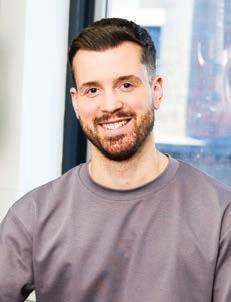
As ACARA’s new Executive Director of Curriculum, Ms Kathryn Tully brings decades of experience and a commitment to equity, excellence and innovation to the work of shaping Australia’s national curriculum.
It’s been a few months now since I started in the role of Executive Director, Curriculum, and ’ve been re ecting on the journey that has led me here to the Australian Curriculum, Assessment and Reporting Authority (ACARA).
After more than three decades working across Queensland’s education sector, starting out as a secondary teacher and in various roles at the Queensland Curriculum and Assessment Authority (QCAA) and the Queensland Department of Education, I’m honoured to contribute to ACARA’s national vision: to inspire improvement in the learning of all young Australians through world-class curriculum, assessment and reporting.
Curriculum has been at the heart of my career. t’s been my passion for many years. ’ve been fortunate to work on transformative projects focusing on students and teachers, supporting schools, and bringing innovative ideas to life. At QCAA, led work supporting the implementation of the latest version of the Australian Curriculum. With a great team, we built a roadmap that placed students, teachers and schools at its heart. We focused on developing practical resources to support curriculum implementation, such as a new website and a planning app more than 20,000 Queensland teachers now use.
From this experience, I’ve learnt the importance of collaboration, innovation and having a clear and purposeful vision. These are lessons that carry with me to ACARA.
Collaboration is key Taking on this role felt like a natural progression. ’m excited to step into a
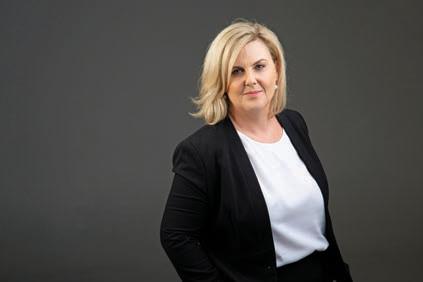
position that can help shape curriculum at a national level. ACARA’s national role is both a privilege and a responsibility. We develop and maintain the Australian Curriculum, lead the National Assessment Program, and publish data that enables evidence-based decision-making across the country.
But none of this work matters unless it makes a difference where it counts most: in our classrooms. For me, success means supporting our dedicated ACARA team while engaging deeply with the people we serve. That means building trust, forming authentic partnerships and genuinely engaging with the full range of stakeholders in education including teachers, system leaders, school principals, parents, carers and students.
To develop a world-class curriculum, those voices must be heard and re ected in everything we do.
This collaboration is also key for ACARA in ensuring the latest version of the Australian Curriculum is understood and embedded confidently by teachers. I appreciate the current demands on classroom educators and recognise the value of great curriculum materials. believe we have an opportunity and responsibility to work with jurisdictions to support further the assistance we offer, reduce duplication of effort, and help every teacher feel equipped to bring the curriculum to life.
Innovation grounded in practice
Technological change is reshaping how we live, work and learn. Artificial intelligence, virtual learning, and smart planning tools are now part of everyday learning. uring my time in Queensland’s epartment of Education, helped deliver a digital
innovation plan, digital resources and capability development and an A tool for students and teachers.
Tools like this offer real benefits for time-poor educators. The potential for A to assist in planning teaching, learning and assessment are significant. At ACARA, we’re also exploring how to capitalise on the potential of new and emerging technologies. nnovation is about identifying what works, creating something new and embedding it thoughtfully to ensure it adds value. believe the best innovations are born from listening to what teachers need and then co-designing solutions with them.
ahead
Knowledge and therefore curriculum aren’t static. They evolve, and over time teachers innovate. So, if you’re passionate about curriculum, get involved. Engage with ACARA, contribute to the work within your state or territory, or through professional networks. our voices help to shape what students learn now and in the future.
For me, the curriculum is far more than a document. t’s the foundation of what happens in every classroom, every day, across the country. And getting it right means delivering a document that supports teachers to effectively plan teaching and learning and give every student the chance to be the best they can be. And that’s why ’m excited for what lies ahead. EM
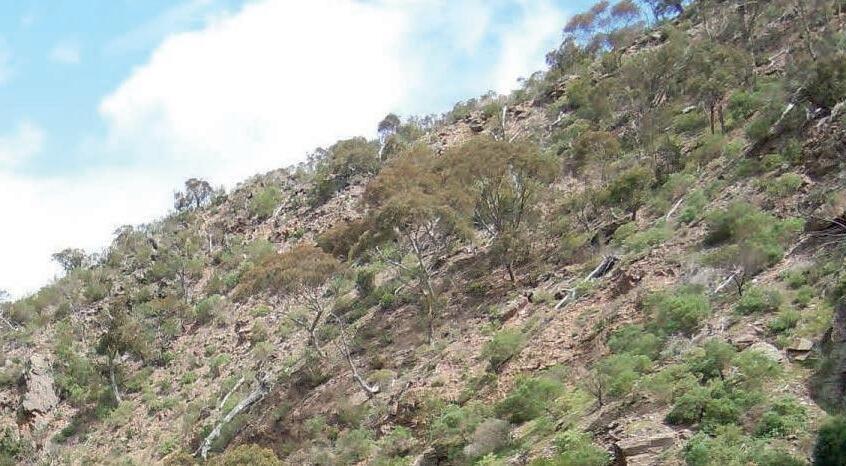
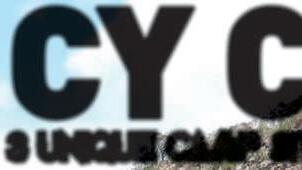








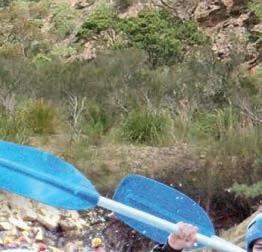
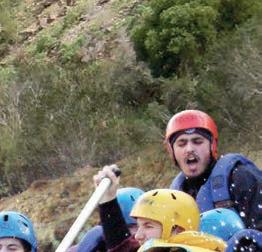
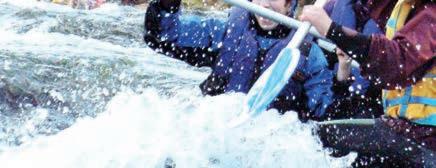





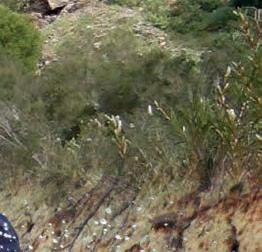
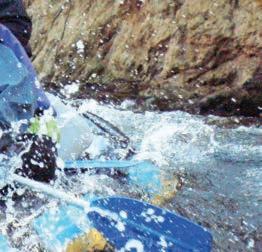

Educators are silently battling an unseen mental health challenge, with new research revealing the profound impact of secondary traumatic stress on teachers' wellbeing and their commitment to the profession.
Australian educators are experiencing unprecedented psychological strain, with new research revealing that nearly 40 per cent of teachers are considering leaving the profession due to overwhelming secondary traumatic stress.
A groundbreaking national study by Dr Adam Fraser and Deakin University has uncovered the profound emotional challenges facing Australia's educators, exposing a critical issue that extends far beyond traditional workplace stress.
Dr Fraser has worked with over 1,100 school leaders across Australia since 2016 in his sustainable leadership program The Flourish Movement. Through this program he had some interactions that lead him to realise that it was more than burnout
struggles, and carrying the emotional weight of their students' challenges.
"The length of relationship is crucial," explains research collaborator Ms Christine Armarego. "Unlike a paramedic who might interact with someone brie y, teachers know their students for an entire year. They understand family dynamics, sibling relationships, and the ongoing context of a student's trauma."
The study s most startling finding is that STS accumulates over an educator's career, contrary to expectations that experience would make teachers more resilient. In fact, the longer teachers remain in the profession, the higher their secondary traumatic stress levels become.
"It's like rust in a car," Dr Fraser says. "The stress doesn't diminish with experience – it builds up, layer by layer."
The study revealed that educators are increasingly becoming support systems not just for students, but for entire families. Many parents turn to teachers seeking guidance, further expanding the emotional labour educators must manage.
"Sometimes educators are supporting not just the student, but the entire family. They're listening to multiple complex stories and trying to provide guidance,” Ms Armarego says.
Critically, the research found that only one undergraduate program in Australia currently addresses secondary traumatic stress, leaving most new teachers unprepared for the emotional challenges they'll face.
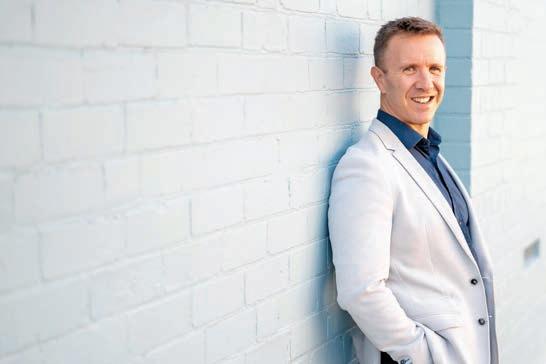
"New teachers are entering the profession without understanding the potential emotional toll. They're not told about these challenges during their training," Dr Fraser says.
The research serves as a critical wakeup call, urging education systems, and policymakers to recognise and address the emotional challenges facing educators.
Dr Fraser and his team are developing comprehensive training programs addressing STS at multiple levels: school systems, leadership, individual coping, and peer support.
"We wanted to create more than just another metric showing how difficult educators' lives are," Ms Armarego says. "Our goal was to provide practical,
actionable strategies to help teachers manage and mitigate secondary traumatic stress.
The research recommendations include:
•Comprehensive STS training in teacher education programs
•Systematic support mechanisms within schools
•Individual and peer-based coping strategy development
•Recognition of STS as a distinct professional challenge
For many educators, the study validates experiences that have long gone unacknowledged.
"We're not just talking about a workplace issue. We're talking about the mental health of the professionals who shape our future generations," Dr Fraser says.
Ground zero
Former teacher, deputy principal and Victorian Department of Education senior staff member Mr Ben Sacco is familiar with the challenges
facing school leaders. With more than 20 years in the education sector, he draws on his experience in his current role as the Managing Director of Education Economy, a national education consultancy which supports schools to respond to student behaviours of concern, teacher retention and school culture.
The findings in The Silent Cost mirror insights from Education Economy’s Capture Survey across Australian schools, which identifies key at risk factors’ that contribute to workplace adversity, such as stress, burnout, and compassion fatigue,” Mr Sacco says.
What we find is by identifying these risks early, we can better prepare schools to reduce the frequency of the challenges that directly impacts staff health and wellbeing.”
Similar to Dr Fraser’s observation that educators have become the social workers of society, Mr Sacco says schools are becoming ground zero for unaddressed social trauma, without the support systems found in other frontline sectors.





“This isn’t just a wellbeing issue, it’s an economic one. High stress and burnout among educators naturally increase staff turnover and recruitment costs, reducing productivity and engagement across our education system,” he says.
“Without targeted, preventative measures, such as robust systemic support, responsive classroom behaviour strategies, and mental health resources, the pipeline of effective education professionals weakens. This not only threatens staff wellbeing but also undermines student outcomes and the broader economy.”
Dr Fraser agrees. "Our research showed that trauma informed practice is essential for the students and is now part of an educator’s role, but that there are no system based supports for increased work educators are now expected to do.” EM
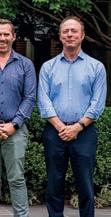
Phase 1: Reflection and Renewal: Individual self-reflection and whole group webinar
Phase 2: Reflection and Renewal: Two day f2f (face to face) workshop March 5th & 6th 2026 | MELBOURNE
Phase 3: Reflection and Renewal: Executive Coaching Session (one hour per participant)
Phase 4: Relatedness: Adaptive Thriving School Cultures (Two day f2f workshop) May 11th & 12th 2026 | BRISBANE
Phase 5: Refresh and Refine Executive Leadership to enable responsible stewardship of a Catholic School (Two day f2f workshop) July 27th & 28th 2026 | ADELAIDE
Phase 6: Refresh and Renew (One day followed by a dinner) September 11th 2026 | BRISBANE
Target audience: Current School Principals with a minimum of 3 years’ experience.
For more information or to register contact Helen Langborne on helen@thebrowncollective.com.au or 0427 219 664

Philippa Brearley Principal Holy Trinity PS, Curtin

“I wanted to thank you for the 6R program in Melbourne. This program is honestly one of the best PL experiences I have ever had in my 35 years in education.”

Timothy Smith Performance and Improvement Leader Catholic Education Archdiocese of Canberra and Goulburn
“Congratulations Stephen, the 10 principals from Canberra and Goulburn have referred to the last 2 days as the best PL they have undertaken. Inspiring.”
ZhaoFei (Victor) Shen, a pre-service teacher at the University of Melbourne, shares his journey into teaching mathematics and physics.

My journey into teaching began with an unexpected revelation. Two years ago, standing outside the Royal Exhibition Building in Melbourne after my final physics exam, I made a decision: I would not continue down the path of physics.
I was barely passing, and I felt increasingly disconnected from the abstract theoretical knowledge that seemed to dominate my studies.
Instead, my true passions lay elsewhere – creating video game tutorials and tutoring English to secondary students in China. These activities brought me more satisfaction and a sense of genuine achievement than my physics degree ever had.
When my parents inquired about my future, I surprised them with my unexpected choice: I wanted to become a teacher.
What drove me wasn't just a career choice, but a transformative experience. The joy of watching students I've helped achieve their goals was something profoundly meaningful – a feeling I had never experienced before in my academic journey.
Now, I'm completing my Master of Teaching (Secondary) degree at the University of Melbourne, specialising in mathematics and physics. These subjects aren't random selections; they're subjects I
feel most confident teaching based on my prior knowledge.
My approach to teaching goes beyond traditional instruction – I'm committed to making learning relevant and engaging. Take mathematics, for instance. Students often question the real-world application of complex mathematical concepts like calculus. My response is always practical: I highlight the importance of being able to calculate the unit price of goods so they can tell whether they are saving money whenever there is a sale.
Physics presents a different challenge. While some argue that physics phenomena rarely appear in daily life, I believe the discipline teaches something far more valuable: a mindset of curiosity. Understanding how and why things work develops critical thinking skills essential in modern society.
My most memorable teaching strategy involves using memes to introduce complex topics. During my school placements, I created memes that showcase key lesson ideas, using them as introductory hooks and challenging students to explain their meaning after content delivery. While curriculum content remains consistent, our presentation can make lessons engaging.
To my delight, students absolutely loved these unconventional teaching methods. I've completed three four-week teaching rounds in Melbourne's metropolitan areas, re ecting my urban background growing up in Shanghai. While I'm open to rural teaching experiences, city schools remain my primary focus. Beyond school placements, I currently tutor Secondary students of all year levels in mathematics and physics, finding these one-on-one sessions both financially rewarding and personally fulfilling.
The current teaching landscape presents significant challenges. uring my placements, I came face-to-face with teaching's intense physical and emotional demands: managing just three classes left me exhausted. The severe teacher shortage across Melbourne and Victoria isn't just a statistic – it's a lived experience. While I've successfully completed my placements, the prospect of future workloads is daunting. Everyone talks about these challenges, and now I truly understand why.
As I approach the end of my teaching degree, I'm excited about the potential to inspire future generations. My journey proves that unexpected paths often lead to the most rewarding destinations. EM









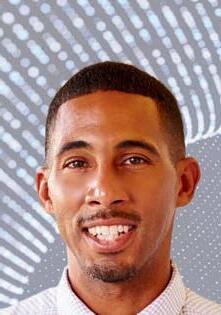







The Challenge


Professional curriculum resources designed by educators, for educators

Teachers need time, training, and confidence to deliver sensitive CRRSE topics while meeting curriculum requirements and respecting diverse school values.
Our Solution
Structured, plug-and-play lessons with comprehensive teacher guides, professional development support, and flexible implementation options.

Evidence-Based • Curriculum-Aligned • Educator-Approved
Developed by specialists with input from young people, teachers and researchers
Comprehensive teacher guides with confidence-building professional development




Flexible modules that adapt to your school's values and community context
Builds lasting internal expertise, no more external dependency




Radford




As Melbourne gears up for the National Education Summit in August, there’s one part of the event that promises to transform classrooms: The Education Show.
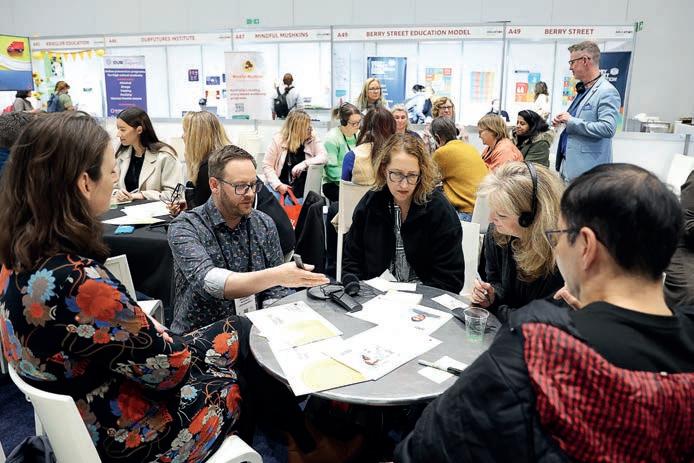
The National Education Summit in Melbourne is proving to be a popular event on the education calendar, with registrations up 92 per cent on last year.
Taking place Thursday 28 – Friday 29 August at the Melbourne Convention and Exhibition Centre, organisers say this year’s event promises to be an unmissable opportunity to connect, learn, and walk away inspired.
“After a demanding few years, educators are craving opportunities to step out of the classroom, connect face to face, and reignite their passion for teaching,” Ms
organisers of the Summit, said.
“This event offers exactly that – a chance to collaborate, discover fresh ideas, and return to school with renewed energy and practical strategies. Plus, attending the Summit will count toward your professional development hours, making it a valuable experience both personally and professionally.
At the heart of the Summit is The Education Show, a free expo where educators can explore the latest innovations in teaching tools, technology, and classroom resources.
try the newest products making waves in the education space, directly from leading brands and solution providers,” Ms Metcalf said.
This year’s Summit introduces new free activations, designed to support the wellbeing, development, and engagement of educators.
“From virtual reality (VR) learning labs to sensory supports, the Expo is designed for educators to engage directly with products, ensuring every tool fits their unique classroom needs,” Ms Metcalf said.
“Attendees can expect inspiring live demonstrations, competitions, and exclusive giveaways. This is their chance to experience what’s next in education first-hand.
Highlights include:
• Mind ight ’s immersive R demos like the Anatomy Lab and Math Worlds, giving you a taste of what’s possible for STEM education.
•Apsis VR’s interactive Escape Room programs, where you can try innovative VR tools and even secure discounts for your next excursion or incursion.
•Canine Comprehension’s therapy dogs, Gruffalo and Maisey, showcasing the power of dog-assisted learning.
•The Sensory Specialist’s classroom tools, where you can claim a free stress ball and try exible seating options like wobble stools.
•Yakult Australia’s prize wheel, virtual tours, and free educational resources perfect for lessons on health and sustainability.
Free programs:
Professional development hours that matter On the Expo oor, the Summit also offers a wealth of free professional development sessions in the Knowledge Centre and Classroom of the Future.
Led by renowned educators and thought leaders, these expert-led talks allow teachers to earn valuable PD hours, all while exploring the key topics that matter most to them — from inclusive education strategies to the future of digital learning.
With a pick-and-choose approach, every attendee can tailor their learning journey to their own professional goals,” Ms Metcalf said.
Connect, relax, and capture the moment Education thrives on community, and the summit’s Networking Lounge provides a welcoming space for educators to exchange ideas and build lasting connections with likeminded peers and exhibitors.
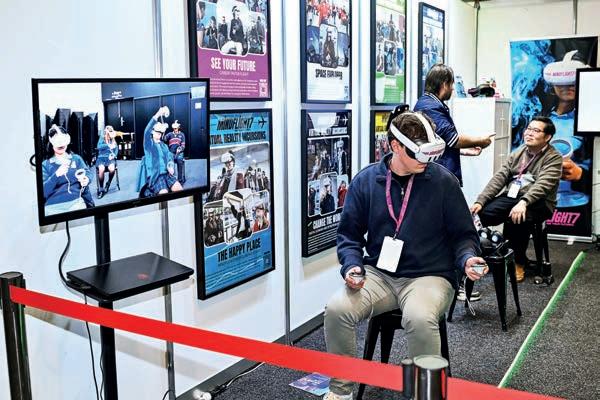
Mindflight7 and Apsis VR’s interactive virtual reality demos give educators a taste of what’s possible for STEM education.
Dive deep into timely topics with innovative educators in dynamic, small-group settings. Round Table Discussions allows attendees to ask questions, share their insights, and walk away with actionable ideas. For those wanting a break, the Chill
Zone, hosted by Fiona Sullivan of Samuda Creative Consulting, offers a tranquil escape. t features breathing techniques, gentle yoga ows, and creative workshops to help educators recharge.
Meanwhile, the Social Snap station lets attendees capture professional headshots or fun (free) team photos — perfect for updating Linked n profiles or school newsletters.
The Summit is also hosting a Book Signing nook, where attendees can meet in uential education authors, get their book signed, and snap selfies with minds shaping modern classrooms.
The National Education Summit is a standout opportunity for educators to innovate, rejuvenate, and collaborate. Whether eager to experiment with the latest tech, gain actionable strategies, or simply connect with fellow educators, this free Expo promises practical takeaways to inspire and empower every teacher to transform their classroom.EM
your free ticket now at
Discover the story behind the Nüdel Kart, a globally recognised, modular play-based learning tool designed to spark creativity, collaboration, and problem-solving in children. The presentation explores the power of loose parts play, the research behind the design, and how the Nüdel Kart is transforming education around the world.
Using the world’s largest case study on writing intervention using educational AI, Dr Ian Hunter explores the profound impact on student performance, joy, confidence, and self-belief that is possible. For any school or school leader concerned about school underperformance in writing, or low student engagement or self-belief around writing, this session is a must see. For those wanting to understand the evidence-backed impact of educational AI in the classroom and what an effective digital journey in education might look like, this session provides compelling insights and practical applications.
(It’s even better when it’s free) Teachers want support.










Bring QT to your school.
With young people spending more time online than ever before, researchers say now is a critical moment to support teens in building healthier digital habits.
From connecting with friends to completing homework, screen-based devices are a central part of teenage life. While concerns about screen time are widespread, emerging research suggests that it’s not just how much time young people spend online, but how they use that time, that matters most for their mental health and wellbeing.
For Australian teachers supporting student wellbeing, understanding this nuance is essential. That’s why Black Dog Institute, in partnership with the Bupa Foundation, has developed Teens & Screens. This evidence-informed classroom program helps students re ect on their digital habits and take greater control of their online lives.
It’s about how, not just how much Emerging longitudinal evidence, including from the Future Proofing Study, suggests that time spent online alone is a poor predictor of adolescent mental health. Instead, it is the nature, purpose, and social context of digital activities that more meaningfully shape wellbeing outcomes.
These findings highlight the need for a nuanced approach to supporting adolescents’ online lives. Supporting young people to create small shifts in digital habits, particularly with managing sleep and social pressures, can foster healthier digital behaviours, helping them thrive both online and of ine.
A wellbeing resource for schools
Teens & Screens is a free, evidenceinformed resource designed to fit easily within busy school schedules. It includes a classroom presentation, facilitator manual,
student and parent fact sheets, and a prewritten email to support communication with families.
The lessons promote healthier, more intentional digital habits by encouraging students to consider how screen use can be associated with things like their mood, sleep and social connections. The program is now available for senior secondary students, with resources tailored for Years 7-12.
Supporting parents at home
With mobile phone bans now in place during school hours in most schools, the majority of screen time occurs at home. Parents and carers play a crucial role in continuing the conversation about healthy screen use.
To support this, Black Dog Institute has created a companion yer offering nine practical, conversation-based strategies for families. These tips are designed to help parents stay engaged, set boundaries and guide their teen through common digital challenges, including cyberbullying, identifying fake or misleading content and managing online friendships.
Digital tools for mental health support When young people feel low, stressed or overwhelmed for extended periods, it can affect their mental health. Meeting teens where they are with freely available digital tools like ClearlyMe, can be a valuable starting point for support. The app is backed by research and was co-designed with teens, parents and mental health experts at Black Dog Institute.
Based on Cognitive Behavioural Therapy (CBT), ClearlyMe helps teens learn practical coping strategies to manage low mood,
negative thinking and low motivation. Activities are grouped into nine themed collections that support key wellbeing goals. For example, the ‘Be at your best’ collection includes strategies for improving self-confidence, managing stress and sleeping well.
The app also features quick ‘Mind Hacks’ for in-the-moment relief and suggestions for of ine activities that encourage breaks from screens. With mood tracking, real stories from other young people, guided meditations and additional help-seeking resources, ClearlyMe offers a safe, accessible space for teens to take charge of their mental health or with the support of their parents or carers.
Creating a shared responsibility
As the digital world continues to evolve, schools and families must work together to help young people build healthy, informed relationships with technology. Programs like Teens & Screens and tools like ClearlyMe give educators and parents practical, evidence-based ways to support student wellbeing.
By shifting the focus from how much time teens spend online to how they’re using it, educators can play a powerful role in helping students develop the resilience, selfawareness and digital literacy they need to thrive, both online and of ine. EM

A leading independent girls’ school in Melbourne is partnering with University of Newcastle to transform classroom practice through collaborative, evidence-based professional learning strategies.
When a PE teacher and specialist teacher observed each other's classes at Lauriston Girls' School, the PE teacher learned how sound impacts neurodiverse children, while the specialist gained insights into engaging physical education techniques.
For Dr Natalie Bunn, Lauriston's Deputy Principal of Learning and Innovation, this moment of interdisciplinary collaboration exemplifies Lauriston s ongoing commitment to professional learning.
"Teaching is an art and a science. It's crucial that teachers continuously learn and refine their craft, she says. Professional learning is about staying informed of educational research, curriculum updates, and pedagogical strategies and drawing upon contemporary and evidence-based research.
This philosophy pulses through the class and staff rooms at Lauriston, a K-12 school with 1,072 students and approximately 250 staff members spread across two campuses; Armadale, an inner south-eastern suburb of Melbourne, and Howqua, near Mansfield in rural ictoria.
Here, professional learning isn't a box-ticking exercise – it's an authentic and comprehensive approach that places collaboration and continuous improvement at its heart.
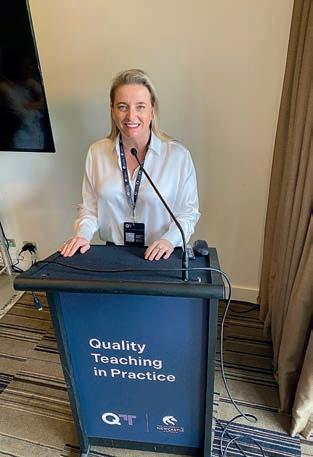
analyse, re ect on, and improve teaching practice across different subjects and grade levels.
environment and significance.
The following year, the school invited QT Academy founder Laureate Professor Jennifer Gore AM to its Armadale campus, where she ran a two-day Quality Teaching Rounds workshop with Lauriston’s leadership team. It was so well-received, they invited her back again in 2021.
In Term 4, 2024, Ms Michelle Ware, a Senior Quality Teaching Adviser at QT Academy, delivered a strengthening program design workshop for Lauriston’s staff. She returned at the beginning of this year to run a workshop for all senior school teachers to ensure that the entire teaching cohort had full training.
What distinguishes the QT Academy approach is its rigorous, research-backed methodology, Ms Hehir says.
"We are very respectful of the 20-year research history," she notes. "The University of Newcastle continues to pose questions and gather data, which we find reassuring.
Dr Bunn, who brings a fresh perspective having recently joined Lauriston, says professional learning develops teacher confidence, their effectiveness in the classroom, and their ability to meet the diverse needs of students.
Ms Kate Hehir, Assistant Principal of Lauriston’s Junior School, brings 18 years of experience to this mission. "We talk a lot about lifelong learning for children," she explains, "but we believe the same applies to our teachers. If we help support them to continue being passionate about their craft, that's what retains teachers and creates engagement in the classroom."
"Our experience with QT began by being introduced to the 18 elements and the coding process," Ms Hehir recalls. "We quickly realised that the strength of QT centred around the comprehensive analysis of the teaching within the observed lesson. This means that the focus of QT is not on critiquing the teacher or the content but instead the emphasis is on coding the learning taking place, specifically looking at intellectual quality, quality learning
"As a school, Lauriston has been renowned for cultivating professional learning, and we play a critical role in facilitating and supporting teachers to engage in different professional learning opportunities."
In the junior school, Lauriston has developed Professional Learning Communities comprising three teachers from different areas – lower primary, upper primary, and specialist teachers.
Using the example of the collaboration between the specialist teacher and PE teacher – largely brought about by the QT Academy approach – Ms Hehir says this speaks volumes. “The PE teacher was running a noisy ball-sports activity, and the specialist teacher could offer insights about how sound might impact neurodiverse children – something that might not have been on the PE teacher's radar,” she says.
Dr Bunn agrees, emphasising the power of connection. "The best professional development is going into classrooms and seeing learning through different eyes. It's about building capacity within staff and creating a culture of sharing and re ection.
The school's professional development support for teachers goes beyond more traditional models by valuing and supporting broader professional learning. "We encourage staff to pursue further education, whether that's Masters or Doctorate programs. We don't want to lose talented teachers – we want to support their growth and passions."
This year, Lauriston is taking its commitment even further by developing a bespoke teaching and learning framework grounded in the University of Newcastle’s Quality Teaching principles.
"We're also aligning our teaching and learning framework with our school values
and contemporary educational research such as the University of Melbourne’s New Metrics project and drawing on the OECD Unlocking High-quality Teaching," Dr Bunn explains. "What makes our approach unique is that we're not aware of another school basing their framework on Quality Teaching principles."
The framework will integrate with the school's wellbeing approach, creating a holistic educational model that supports both teachers and students.
For independent teachers or those in smaller teams, like Junior Art and library specialists, the Quality Teaching Rounds have been transformative.
"Teachers have shared about how much they value making connections across faculties and seeing how children operate in different classroom contexts. QT builds teacher morale because there is recognition for what you are doing well and opportunities for sharing and celebrating your teaching," Ms Hehir says.
Lauriston's commitment hasn't gone unnoticed. The school has been recognised as a partner of the University of Newcastle's QT Academy, a testament to their innovative approach.
"It's about keeping teachers motivated, and looking at things with fresh eyes," Dr Bunn says. "We're tapping into best practices and
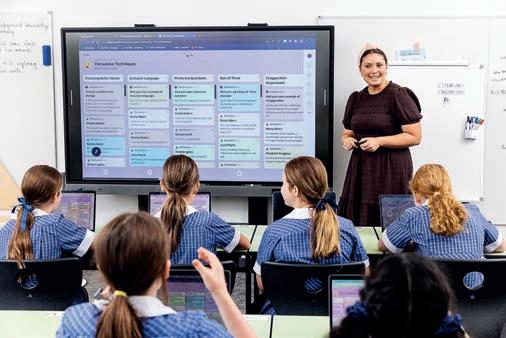
providing a global lens for our educators."
The impact extends beyond individual classrooms. In the senior school, they've experimented with different approaches to Quality Teaching Rounds, mixing teachers from various experience levels and faculties.
"We've tried putting a more experienced teacher with someone newer to the profession," Dr Bunn says. "Each year, we see different benefits from these configurations.
Ms Hehir re ects on the broader implications. "We don’t want teachers to feel isolated in their teaching practice," she says. "QT rounds break down those barriers. We're creating opportunities for teachers to learn from each other, to see beyond their own classroom walls."
"We want to support staff to continue being passionate about their craft," Ms Hehir says. "That's what keeps teachers excited and engaged.
Lauriston's model offers a compelling vision of professional development. By prioritising collaboration, researchinformed and evidence-based strategies, and continuous learning, they're not just supporting teachers – they're transforming education.
"Teaching is about lifelong learning," Ms Hehir re ects. And that applies to both our students and our teachers." EM
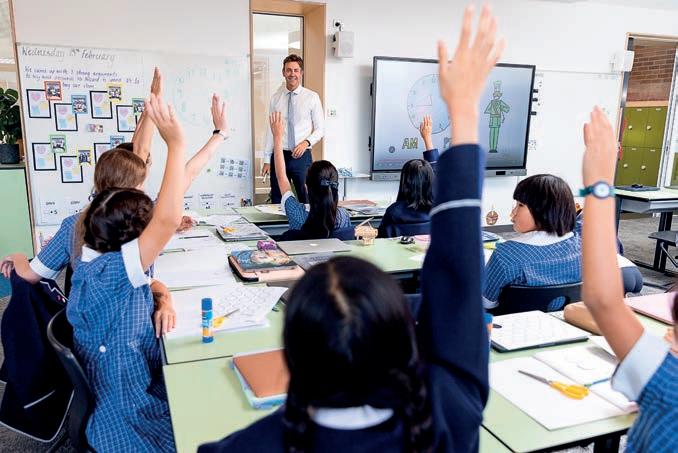

From centre-based camps to challenging outdoor expeditions, The Outdoor Education Group leads students on a journey of self-discovery, community building, and environmental connection through carefully designed outdoor education programs.
Outdoor education experiences transform student perspectives far beyond traditional classroom learning.
As a Year 10 student from International Grammar School who attended a camp in Tasmania run by The Outdoor Education Group (OEG) put it, "This is not about getting from point A to point B, but about what is created along the way. This journey helped me restate who I am to myself and who I am to others."
The Outdoor Education Group is an independent not-for-profit organisation that provides outdoor experiences for more than 32,000 participants per year. Founded in 1984, and with more than 300 staff working across the country, it is Australia’s most established outdoor education provider.
Students discover personal growth through OEG’s immersive programs that challenge their comfort zones.
A Perth College student who attended a camp at Margaret River captured this sentiment, noting the experience was "challenging, but very rewarding," while highlighting how stepping out of familiar environments can spark significant personal development.
A student from St Michael's Grammar School in Melbourne described their Eildon camp as an opportunity that "helped me grow as a person in many ways and let me get out of my comfort zone."
These students’ experiences reveal a consistent narrative of transformation. Group leaders play a crucial role, with one student praising their educator for making them "think deeper about not just ourselves, but also what surrounded us."

These experiences are less about physical activities and more about creating meaningful, re ective journeys that equip
students with skills and insights that extend far beyond traditional classroom learning.
"It's really about developing a core understanding of self," says Mr Pete Griffiths, CEO of The Outdoor Education Group. t’s prompting students to question Who am I? What's my challenge limit? What am I good at, and what can I build on?" he says.
OEG’s strategic sequential approach is a carefully designed sequence that progressively builds student capabilities year-on-year. This can start at any year level between primary or secondary school students.

Commencing at centre-based camps with structured environments, students learn foundational skills that become increasingly complex as they advance through secondary school.
"In Year 7, we focus on designing


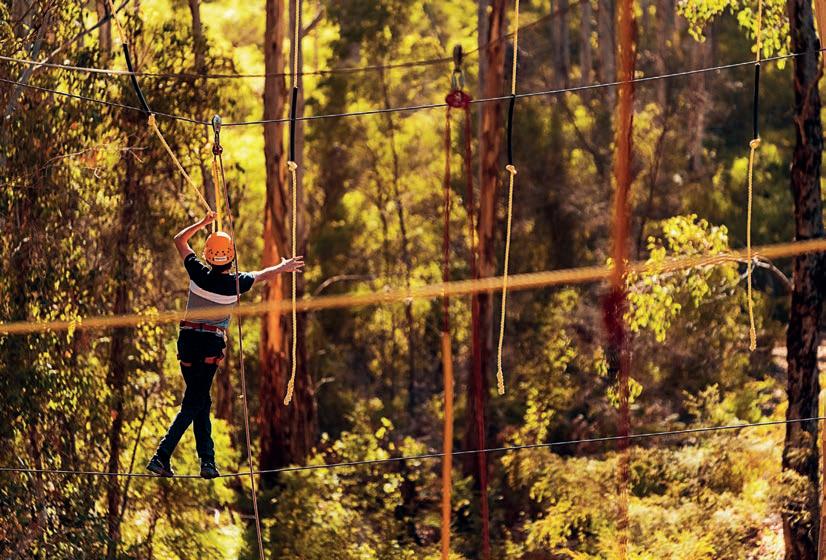
programs that strengthen connection and community. This is especially important as students are moving up to their first year of senior school. Throughout Years 8 and 9, the focus is more on teamwork, leadership and increasing towards decision-making and critical thinking, Mr Griffiths says. We start to mix and match different activities, gradually increasing challenge levels."
The program's core focuses extend beyond mere outdoor activities. Students develop critical competencies including communication skills, teamwork, leadership capabilities and resilience.
What sets this approach apart is its holistic methodology. Students aren't only learning outdoor skills; they're developing a deeper understanding of themselves and their relationships with others and the natural environment.
"We're looking at how students work together within a small team, Mr Griffiths says. "How do they lead? How do they learn from each other?"
The progression from centre-based camps to more challenging journey programs represents a sophisticated educational model.
Initial stages provide supported, structured environments with cabins, high ropes courses, and guided activities. As students advance, they face increasingly complex challenges that test their newly acquired skills. The bridge between a traditional centre-based camp and journeys is a bush camp. Where components of both centre-based programs and journeys are blended to extend the student experience.
“Unlike centre-based camps, which are typically activity-based and site-bound with fixed facilities, our Journey Programs prioritise simplicity, autonomy, and personal growth. Students move each day, carry what they need, and work together to thrive in changing outdoor environments. There are no cabins or daily schedules here – just purposeful learning through challenge, re ection, and community living, Mr Griffiths says.
“Centre-based experiences are excellent for introducing younger students to the outdoors, teaching foundational skills, and building social connection. Journey Programs, however, are where these foundations are tested and deepened, offering students the opportunity to lead, re ect, and grow on a deeper level.”
Programs
Camps: 3-5 days (Standard)
OEG guides students through adventure activities, tailored challenges and exploration at its hardtop camps (VIC, NSW).
Introduction to Journeys: 3-5 days (Standard)
These bush camp programs incorporate base-camp and journey components to enable students to extend themselves with full support (VIC, NSW, WA).
Journeys: 3-5 days (Standard)
Journeys focus on experiential learning through adventure activities, camping and community living (VIC, NSW, WA).
Expeditions: 10-30 days (Standard)
Expeditions form the peak experience of a robust outdoor education sequence and are uniquely created in partnership with your school (VIC, NSW, WA).
The Duke of Edinburgh’s International Award Australia
Working to the requirements of the Award and under the guidance of qualified instructors, OEG can assist with Bronze, Silver and Gold Practice Journey and/or Qualifying Journey (VIC, NSW, WA).
Both Government and Independent schools Principals consistently report significant student transformations, highlighting the program's broader educational impact.
Environmental connection forms a crucial component. Students develop not only practical skills, but an understanding of ecological systems and their personal relationship with nature.
"It's about deepening that connection to nature and understanding environmental stewardship as a whole, Mr Griffiths says.
It's a powerful approach to developing adaptable, self-aware young adults prepared for complex life-ready challenges. EM
For further information about OEG programs, contact enquiries@oeg.edu.au or phone 1800 888 900.
Civiq's innovative water stations have given Rosebank College's environmental student leaders an opportunity to challenge traditional approaches to school water consumption.
In the heart of Sydney's inner west, Rosebank College is rewriting the narrative of environmental responsibility, one water bottle at a time.
The school's journey began with a clear vision: eliminate single-use plastics and inspire a generation of ecoconscious students.
"We want all students and staff using reusable water bottles, thus reducing singleuse plastic within our community," explains the school's Principal Ms Iris Nastasi.
The transformation started with a critical assessment of the school’s existing infrastructure.
"We had a look at our current bubblers and knew we needed to improve the function and aesthetics of our current system to achieve our goal," Ms Nastasi says.
The school reached out to Civiq, a Sydney-based manufacturer of Australianmade drinking water fountains and refill stations for schools and local councils, for a solution.
"When it comes to bubbler options for schools, we think Civiq leads the way in terms of design and exible solutions. Other suppliers did not have the solution that works for Rosebank, she says.
The family-owned company originally designed wayfinding signage until a council on Sydney’s Northern Beaches enquired about adding a tap to its wayfinding signage, simultaneously providing directions while reducing plastic waste in public spaces.
The request sparked the first Civiqdesigned water station the Aquafil FlexiFountain – which has now evolved to
an extensive range of products.
“After seeing the success of drinking water stations in parks, schools wanted to install highly visible bottle refill stations on their campuses,” the company said.
Its range of robust, low-maintenance hydration solutions designed specifically for schools are also helping to foster student ownership as schools can personalise their drinking station with artwork.
Rosebank College turned to its Year 12 environmental leaders to take ownership of its new water stations.
"These students selected the designs and introduced the newly installed bubblers to the college community at a whole school assembly, challenging every student to bring their own reusable water bottle to school.
The impact was immediate and profound, indelibly changing the school water culture. Single-use water bottles disappeared from the cafeteria and school events. The message was clear: sustainability isn't just a policy, it's a collective commitment.
A recent Open Day demonstrated the school’s new approach.
"All students and staff brought their own reusable water bottle, rather than the college providing them each with a singleuse bottle of water," Ms Nastasi says.
The Civiq water stations have become more than infrastructure at Rosebank College – they are not only reducing plastic waste, they are cultivating a culture of environmental responsibility.

Year 12 students were involved in selecting the designs of the new water stations.
"They have changed the way we provide water to our school community,” Ms Nastasi says. EM
To enquire about Civiq’s range of indoor and outdoor drinking water stations designed for schools, visit civiq.com.au, email sales@ civiq.com.au or call
What started as a lecture series focusing on wellbeing has evolved into a dynamic platform for connecting students and parents with experts shaping our understanding of contemporary issues.
In Term 1 this year, as Professor Amanda Third, an expert in young people’s digital engagement, delivered her guest lecture at International Grammar School (IGS)’s The Ultimo Series, no one anticipated the connection that would ignite between a passionate student and a leading researcher.
"Professor Third soberly presented a lot of the evidence around children's and young people's use of technology," says Mr Thom Marchbank, Deputy Principal Academic at GS.
"She's worked in this space for 15-20 years, so she's got a wealth of qualitative and quantitative evidence about what kids actually do with devices."

Professor Third’s approach of cocreating design projects with young people resonated deeply with IGS student and STEM leader, Mia.
“Mia is really STEM-focused and wants to work in AI,” Mr Marchbank says. “She was just fascinated by Amanda’s lecture”.
It began as a standard evening lecture, but unexpectedly transformed into a potential mentorship opportunity for Mia.
"I hadn't anticipated that," Mr Marchbank admits, highlighting how The Ultimo Series does more than just transfer knowledge – it creates genuine pathways for student inspiration and potential future collaboration.
Mr Marchbank is the driving force behind the lecture series. Named after the suburb where the school is located, The Ultimo Series has become a platform for exploring critical contemporary issues and facilitating dynamic conversations among parents, carers, teachers, students, prospective families and the broader school community. Topics have ranged
from mental health and climate change to artificial intelligence and technology s impact on young people.
"We're positioned in this interesting spot in the inner-city, in a former industrial district, close to the University of Sydney, University of Technology Sydney, and the University of Notre Dame Australia," Mr Marchbank says.
This geographical context, combined with a professionally diverse and highly engaged parent community, created the ideal environment for an innovative lecture series which also involves students.
“Student leaders introduce speakers and typically take notes on what the person speaks about, and then give a précis of what they understood," Mr Marchbank says.
In May this year, leading researcher and strategist Dr Sandra Peter spoke on the topic ‘Leading the future: Skills our children need in a post-AI 21st century’.
Her lecture drew the series' largest crowd, with attendance reaching near-
capacity in the Renaissance Centre.
The popularity of her lecture underscores the series' ability to attract high-calibre speakers who can captivate both students and parents.
"People really connected with her, and with her affirming emphasis on the human at the heart of technology use," Mr Marchbank says.
With two lectures completed so far this year, and two more to come, The Ultimo continues to push boundaries. In August, Professor Adam Guastella will explore supporting neurodiverse children.
"We are seeing a greater instance of recognition and accommodation of children with neurodiverse profiles and needs in the community and in our schools," Mr Marchbank says. The session aims to address a growing educational imperative, recognising the increasing awareness and support required for neurodiverse students.
"A lot of our staff too are thinking about further professional development to support them working with students with neurodiverse profiles and needs.
Looking further ahead, The Ultimo Series shows no signs of slowing down.
"We're thinking proactively about what issues might be on the horizon, what's of interest to our community," Mr Marchbank says. From exploring Australia's potential in film production to understanding technological disruptions, the series continues to push educational boundaries.
"We're thinking about some things we could discuss in 2026 – continuing these conversations that matter."
Visit https://events.humanitix.com/igsthe-ultimo-series-2025 to register. EM
From mountain peaks to sandy beaches, CY Camps o ers diverse, purpose-built facilities that inspire students, challenge boundaries, and create unforgettable

When a group of Year 7 students arrived at CY Camps’ farm retreat in central Victoria earlier this year, they were greeted by a brand-new high ropes course that challenged their limits and sparked their courage.
Harnessed and supported by teammates, these students discovered that true learning happens when adventure meets collaboration.
The elevated activity is one of several on offer at Camp Kookaburra in Corop, midway between Bendigo and Shepparton. It is one of three CY Camps in Victoria, each with a unique character and purpose; it offers alpine adventures at its Featherop Chalet, and beach-getaway vibes at its Point Leo Camp.
Unfortunately, a fourth site spanning 300 acres in the Grampians was recently lost to bushfires.
CY Camps Director Mr Moshe Kahn understands that educational experiences transcend traditional learning environments.
"We're not just offering a camp," Mr Kahn says. "We're creating environments where students can truly discover themselves and their potential."
The three sites – Camp Kookaburra, Feathertop Chalet, and Point Leo Camp –offer schools exibility and diversity.
Each site is deliberately different, Mr Kahn says. "It's not by accident, but by design."
Traditionally attracting primary schools, Camp Kookaburra has recently undergone a significant transformation to make it more appealing to secondary schools.
The centrepiece of this evolution is a groundbreaking new facility that sets it apart from typical school camps.
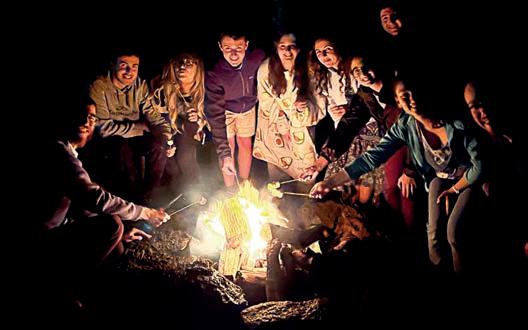
"We've just put in a new vertical high ropes course and the first elevated seesaw in Victoria," he says.
"Imagine standing on a seesaw 10 meters high, fully harnessed. You can't cross without your teammates supporting you below. It's a gladiator-style activity that's both thrilling and educational.
The camp boasts an extensive range of activities designed to challenge and engage students. "We have several on-site activities," Mr Kahn says. These include archery, basketball, beach volleyball, and bike riding –providing schools with exceptional exibility.
"Every one of our activities is built around team building. It's not just about the thrill –it's about collaboration, trust, and personal growth."
CY Camp’s Feathertop Chalet provides a different kind of elevation, in a stunning alpine location offering year-round adventure.
"Feathertop Chalet is our most unique property," Mr Kahn says. "It's our largest site, with over 300 beds and the most extensive facilities.
Located in Harrietville at the base of Mount Hotham, it is the closest campsite to Mount Hotham Alpine Resort. This strategic location transforms the camp into a yearround destination.
"Schools can take their students skiing, abseiling, mountain biking, white water rafting it s an incredible range of activities offered year-round.”
This versatility is a game-changer for schools seeking comprehensive outdoor education experiences.
"We offer over 30 on-site activities at Feathertop," Mr Kahn says. "From canoeing
and mountain biking to high ropes and ying foxes, we've created an environment that goes beyond traditional camp experiences."
What sets Feathertop apart is its approach to team building, he says.
"None of our high ropes activities are just about thrill," Mr Kahn says. He describes an activity called the ‘magic carpet’ where students must rely on teammates to progress. "You need your teammates holding trap doors to help you get across. It's about trust, building relationships, and mutual support."
The facility is particularly popular for senior year levels. ear 12 retreats find Feathertop perfect," Mr Kahn says. "We have extensive breakout rooms and halls, which makes it unique for senior students looking for a retreat experience."
Point Leo Camp on the Mornington Peninsula offers yet another dimension.
"Point Leo is very different from our other sites. It's a self-managed site only a 10-minute walk to the beach,” Mr Kahn says.
Spanning 15 acres, the camp offers a unique coastal experience for schools.
"It's got 60 beds, and features a large dining room, common/meeting room, an outdoor deck area, a beautiful pool, plus basketball, and soccer facilities.”
The site is particularly suited for smaller groups and retreats.
"If you want to have a retreat for Year 7 or Year 8, this is perfect. But the real attraction is the beautiful coastal setting and the opportunity for schools to create their own unique experience," Mr Kahn says.
"If schools want high ropes or mountain biking, we organise a third-party provider to come in and run those activities.”

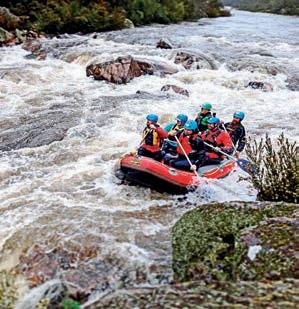
The philosophy behind CY Camps goes far beyond simple recreation. Schools find particular value in camps for specific year levels.
"For Year 7 camps, schools are looking to create cohesion, to help students from different primary schools build camaraderie and collaboration."
Schools can choose from two-night, threeday experiences to more extended four-day programs. Activities range from indoor sports and team-building challenges to outdoor adventures that push students beyond their comfort zones.
Each site is managed by dedicated on-site hosts who ensure a personalised experience.
As a non-profit organisation, C Camps reinvests every dollar into creating meaningful experiences. "We're not just a business," Mr Kahn says. "Everything we do is about investing in young people, in their growth and potential.
To encourage schools to explore these unique experiences, Mr Kahn says CY Camps is offering a special promotion. "We're happy to provide a discount for schools booking before the end of Term 3. It's about making these transformative experiences more accessible.
For school leaders seeking more than a standard camp experience, CY Camps aims to offer something extraordinary. "We're creating environments where students can challenge themselves, build relationships, and discover their potential," Mr Kahn says. EM
For more information on each location, visit www.cycamps.org.au.
A budget-friendly refillable whiteboard marker that embodies the principles of sustainable design ticks all the boxes.
Whiteboard markers that produce faint lines or dry out quickly is the bane of many teachers' lives, inconveniently bringing a rapid-fire brainstorming session to a sudden halt or disrupting a train of thought while explaining a complex math equation.
Their shared frustrations have led one company to seek a solution.
For over 100 years, Pilot Corporation has been guided by its principles of innovating and creating beautiful writing instruments that provide a writing experience like no other.
Reusing products by refilling is one of the key pillars of Pilot Pen Australia’s sustainability approach.
“It’s about avoiding or eliminating plastic waste by extending the life of plastics and reducing the use of raw materials. We’ve designed a quality, Japanese product range of writing instruments that can be refilled many times over for both economical and sustainable effectiveness,” the company says.
With more than 2,000 products in its portfolio, Pilot Pen Australia has the right writing tool for almost any need.
For teachers looking for a reliable whiteboard marker, the V Board Master ticks all the boxes.
Easily refillable, the Board Master is a pure liquid ink whiteboard marker with high visibility and advanced technology, ensuring ink is used to the very last drop.
“As a Design and Technology teacher, I’m always looking for practical ways to bring the principles of sustainable design into the classroom. Using refillable whiteboard markers is a simple yet impactful step,” says Brianna, a secondary school teacher in Gordon, Sydney.
Not only do they significantly reduce plastic waste, but they’re also budgetfriendly and incredibly easy to refill with
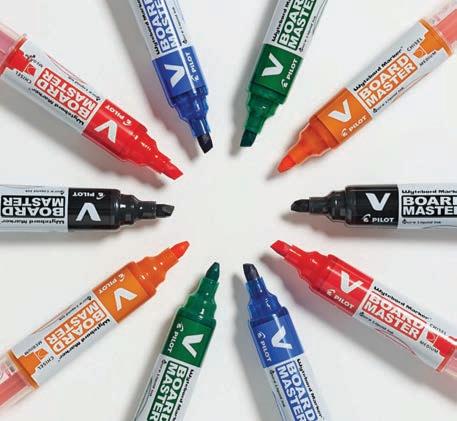

cartridges. It’s a real-world example of responsible design that I can demonstrate to my students every day.”
Designed to overcome teachers’ frustrations with markers that produce faint lines or dry out quickly, the V Board Master has three key features.
“Our markers are available in four vibrant colours – blue, green, orange and red – plus black. Teachers can make their lessons pop with rich, bold ink that’s easily visible from the back of the room,” the company says.
They also have consistent ink ow, which means smooth, skip-free writing from the first stroke to the last.
They also have refillable cartridges. Schools can save money and reduce waste by refilling their markers quickly and easily with no mess.”
The V Board Master also comes in two tip options, Bullet or Chisel.
To extend the life of whiteboard markers, ensure they are tightly capped after use to prevent the ink from drying out. Store them horizontally to maintain ink consistency and ow. EM
V Board Master are available from office product suppliers. Schools can find their local retailer at pilotpen.com.au.
Felton Industries' Avoca range reimagines outdoor furniture with precision engineering to meet disability access standards, from bench angles to table heights, with minimal maintenance required.
Departing from its traditional approach to outdoor furniture design, Felton Industries is breaking new ground with the launch of its Avoca seating range.
Named after the picturesque Avoca Beach on New South Wales' Central Coast, the range represents a significant leap forward in design and functionality.
"This range is a revolutionary step for us," explains Mr Drew Mackinnon, Head of Marketing at Felton.
Unlike Felton’s previous seating products formed by a 250mm wide aluminium plank, the new Avoca range features sleeker, more aesthetically pleasing elements.
The range's core innovation lies in its aluminium extrusions, now reduced to 70mm x 30mm. The result is a product that closely resembles traditional wooden benches but offers superior durability and performance.
Sustainability is at the heart of the new range. The aluminium used is low carbon,
with a production process that saves up to 45 per cent of electricity. The extrusions are powder-coated using what Felton believes is an industry-first technique, creating a textured wood-like effect that doesn't compromise on durability.
"We're looking at bolstering our range into more markets and catering for more people," Mr Mackinnon explains.
The range addresses a critical market need, particularly among architects designing school infrastructure who often specify high-end outdoor seating.
Mr Mackinnon says inclusivity was a key design consideration. The products are meticulously crafted to meet disability access standards, with careful attention to bench seat angles, backrest design, and table heights.
"We've been conscious of making sure we are DDA compliant," Mr Mackinnon says, ensuring the furniture is accessible to
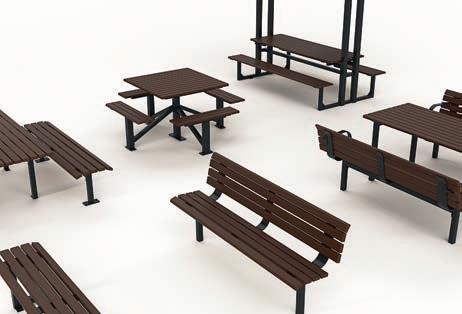
DDA compliant refers to compliance with the Australian Disability Discrimination Act 1992, which aims to ensure that people with disabilities have equal access to buildings, services, and facilities.
The Avoca range is comprehensive, featuring over 120 different products. This includes bench seating in three sizes (1800mm, 2000mm, and 2400mm), table settings, and sheltered seating options.
Colour options include a dark oak and Western Red effect, with custom powdercoating available for legs and armrests.
The company's commitment to sustainability is further underscored by its recent ISO 14001 environmental accreditation.
"What we're offering is an aesthetic of wood, but with the durability of modern materials," Mr Mackinnon explains. The range meets the growing market demand for outdoor furniture that looks beautiful, performs exceptionally, and requires minimal maintenance.
For schools looking to upgrade their outdoor spaces, the company says its Avoca range offers a compelling solution. It combines aesthetic appeal, durability, accessibility, and environmental consciousness in a single product line.
Launched in May, the range promises to set a new standard in outdoor furniture design. As Mr Mackinnon puts it, "We're not just selling furniture – we're helping shape outdoor spaces." EM
To learn more about the Avoca range, call 1800 834 016, email sales@felton.net.au or visit felton.net.au
In response to evolving social challenges, Canberra’s Radford College is incorporating a new suite of resources to equip students with essential skills in consent, healthy relationships, and personal development.
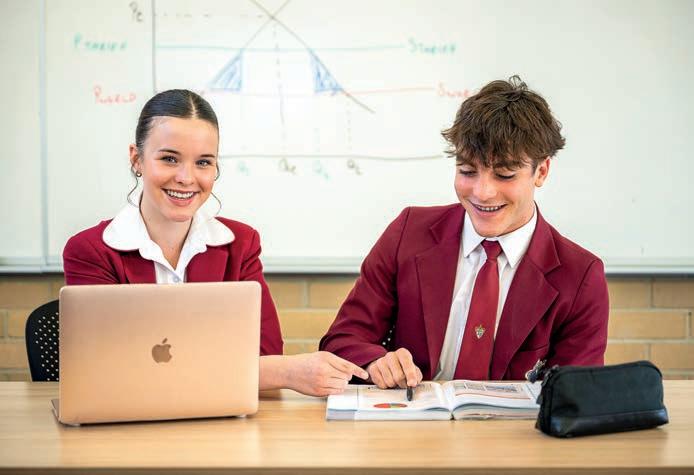
When Net ix s explosive drama series
Adolescence ripped back the curtain on teenage relationships, it sparked a national conversation that schools could not ignore.
One school in Canberra is tackling that conversation head-on, implementing Respect Collective s comprehensive relationship education program for students the same age as the main character in the series.
Co-founded by r Tessa Opie and Ms Kerrin Bradfield, the organisation has developed an innovative, ready-to-use comprehensive relationships and sexuality
education (RSE) platform. t’s designed to support teachers with structured lessons, professional development, and a trusted program mapped to the Australian Health Physical Education Curriculum (v ).
With more than 0 interactive lessons spanning ears to 12, Respect Collective covers topics such as consent, healthy relationships, sexuality, bystander intervention, and digital safety.
The platform’s interactive elements including qui es, games, and multimedia resources have transformed traditionally
challenging subject matter into engaging learning experiences.
Radford College, a Pre-Kindergarten to ear 12 independent Anglican school in Canberra, is one of 1 members of the Association of ndependent Schools of the ACT (A SACT) partnering with Respect Collective.
With 2,1 2 students across its junior and senior campuses, Radford s leadership recognises the critical importance of healthy relationships as part of holistic character development.
Ms Alison Steven, Acting Assistant Principal for Teaching and Learning, explains the school’s strategic approach. She says the school s engagement with Respect Collective is part of a deliberate strategy to address contemporary social challenges.
At Radford we are committed to educating the whole person, with a focus on character building and personal growth, she says.
The Respect Collective resources are being thoughtfully integrated to complement our existing work on consent and respectful relationships, which are core pillars of our pastoral care program. We would like to acknowledge the valuable contributions of our teachers, particularly under the leadership of our Heads of ear, in this space.
Radford s implementation strategy is methodical and multi-layered. Currently, the Respect Collective program has been integrated into ear and pastoral programs, with plans for broader rollout across secondary year levels.
The Health and Physical Education (HPE) department has already begun adapting Respect Collective s resources to complement their existing curriculum.
One of the features that sets Respect Collective’s resources apart is its plug and play’ design, Ms Steven says.
uring recent interdisciplinary learning weeks, teachers across different disciplines could effectively deliver lessons without extensive preparation.
The teachers review the resources beforehand, but they re not expected to write the lesson plans, Ms Steven says.
Professional development is another key component of Radford s approach, with teachers expanding their professional knowledge through targeted webinars from Respect Collective, including advanced strategies to navigate and foster respectful relationships in the classroom.
We’ve had eight to 10 teachers come in before school to participate in webinars about the manosphere, deep fakes, and protecting our students, Ms Steven says.
Evening sessions are also provided for parents, reinforcing the school s commitment to a holistic, community-wide approach to relationship education.
t s really important that we re all working
together, Ms Steven says.
nvolving the entire community in conversations about challenges facing young people is crucial.
The school s multi-pronged strategy re ects broader educational trends. By integrating specialised resources and facilitating professional development, educators can equip students like those at Radford College with essential life skills.
The Australian Government’s Consent and Respectful Relationships Education initiative (2024-202 ) provides grants to the ndependent sector through the Association of ndependent Schools to support Consent and Respectful Relationships Education. The funding is to support the delivery of expert developed, evidence-based, age-appropriate consent and respectful relationship education in the school year 2024-202 .
To that end, the Association of ndependent Schools of the ACT (A SACT), with input from member schools, engaged Respect Collective to develop a tailored, plug and play digital curriculum for A SACT Secondary Schools ( ear -12) which can be delivered to individual classes. Respect Collective’s content aligns with the Australian Health and Physical Education
Curriculum (v .0) and addresses several key learning objectives across the nternational Technical Guidance on Sexuality Education (UNESCO, 2022).
A SACT schools will have access to five lessons per year level in each of ears -12, with each lesson lasting between 4 - 0 minutes. The lessons are tailored to the developmental needs of each cohort, building on the skills and knowledge gained through exposure to the previous year s program.
At their discretion, schools teachers can determine the pace of the delivery of the program, for example five lessons delivered over five consecutive weeks, or five lessons (plus extension activities) delivered over the course of the term year, depending on school preference. This allows schools the exibility to align other classes, seminars, guest speakers etc to Respect Collective’s program. Respect Collective also provides A SACT schools with pre-recorded professional development webinars to upskill teachers to deliver the program to their students. EM
Respect Collective's evidence-based curriculum and professional development resources offer a practical solution to addressing today's complex social challenges without any prep work required by teachers. To register for your free trial, visit www.respectcollective.com.au.
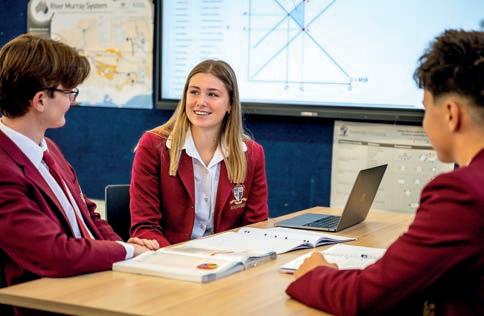

Kingsway Christian College has transformed its educational approach through targeted technology integration, partnering with JB Hi-Fi Education to enhance the learning experience for students and the teaching experience for educators.
In a sunlit classroom at Kingsway Christian College in the Perth suburb of Darch, a group of kindergarten students are using iPads, their fingers tracing shapes and exploring interactive learning games.
Such a scene re ects a digital transformation journey the school started a couple of years ago, says the College Principal Mr Peter Burton. The school set up foundations to use technology as a tool to enhance learning and teaching. Over time, this vision came to life with
thoughtful integration of digital resources into learning.
“We called it a digital transformation, and that was more to do with how the staff were bringing on board a whole change that impacted how we worked. But of course, that then also took the students on a journey as well, and how we would then teach the students,” Mr Burton says.
“One thing we were clear about from the outset was that we wanted to enhance the students’ learning, not necessarily enhance
the technology. We saw technology as a tool that we were going to use to enhance their learning.”
To support its digital integration, Kingsway Christian College teamed up with JB Hi-Fi Education, who delivered solutions designed to align with their curriculum and long-term educational vision. The relationship began with JB Hi-Fi Education delivering devices that met the specific needs of students and supported the school’s pedagogical approach.

Throughout the years, the relationship evolved, with JB Hi-Fi Education providing tech support beyond devices – becoming a key partner with initiatives such as the rollout of AV solutions across all classrooms and more.
"In the beginning, our relationship was focused on device procurement. Over time, this transformed into a collaborative relationship. Now it's more about how JB Hi-Fi Education can add value to our school," says Mr Roger Smith, Director of IT at Kingsway.
Mr Burton appreciates this approach, noting this "solutions focus" where discussions with JB Hi-Fi Education centre on needs, leading to tailored technological solutions that genuinely support educational objectives.
“JB Hi-Fi Education has been a trusted partner of Australian schools for over 20 years and provides a wide range of products for education and services tailored to meet the unique needs of schools and education institutions” says Mr Chris Puff, a JB Hi-Fi Education Account Manager.
“We believe that technology should help educators enhance student learning and that’s a vision we share with Kingsway Christian College. Over the years, we’ve evolved and introduced new solutions that help the school stay focused on learning. From the very beginning it has been a pleasure to work together and bring this vision to life."
A technology evolution in motion Kingsway is a Kindergarten to Year 12 coeducational independent Christian College with approximately 1450 students and 280 staff. Due to its size and its structure, Kingsway Christian College requires a device solution tailored to meet the specific needs of each student group.
For Kindergarten students and new entrants up to Year 2, the digital integration starts with iPads through a play-based learning approach, explains Mr Matthew Lovell, Dean of Secondary.
“iPads were chosen for Kindergarten through to Year 2 to slowly start introducing digital interaction for students, as they are easy to use but powerfully capable devices to start introducing and progressively scaling up learning and digital literacy across those year
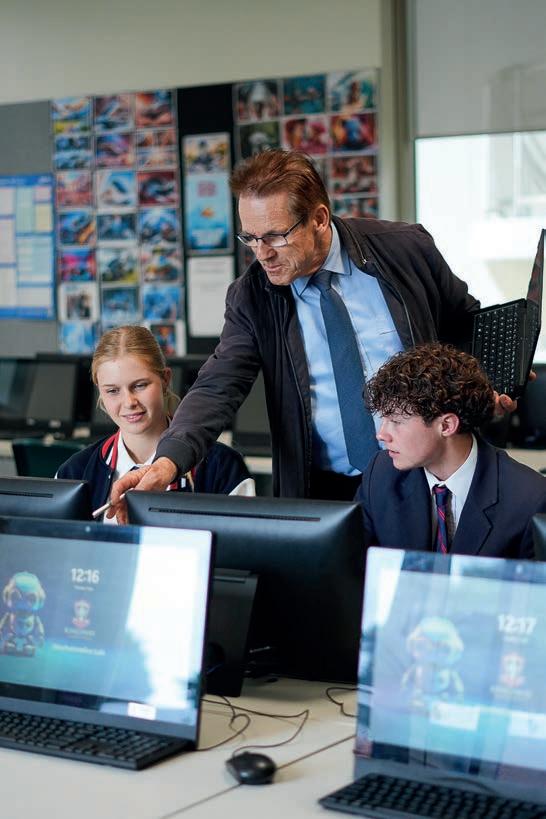
“As a College, like most schools, we've got very tight timelines, very tight budgets, key deliverables, and every year we have to be producing quality education for families and students.”
Mr Roger Smith, Director of IT
groups,” Mr Smith says. “Not all students are given iPads. That is an intentional decision by the Dean of Primary – he wants students to focus on literacy and numeracy, more heavily than technology."
As students grow, they switch systems and devices to start using Microsoft Surface Go tablets.
“A key decision to deploy Surface Go’s in ear is to start moving from finger-based interactions to keyboard interactions and inquiry-based learning, teaching students typing skills,” Mr Lovell says.
For students in Years 4 to 6, the College provides Microsoft Surface Laptops through a 1:1 program. The objective is to offer a
standardised device, to relieve the pressure of parents to source one themselves for their child, according to Mr Smith.
For students from Year 7 onwards, the College operates a BYOD program, recommending Surface devices for students in Secondary school, with an online BYOD portal managed by JB Hi-Fi Education.
Surface devices are also provided to teaching staff across the College.
"When teachers are familiar with a device, they can provide better assistance or support in the classroom to a student who's got that same type of device,” Mr Smith says.
“Kingsway College approached us with a clear vision for how technology should support their pedagogy across each year level. We worked closely with them to recommend and source the right products for each learning cohort," Mr Puff says.
“For Secondary students, we manage a custom BYOD portal, making it easy for parents to select and purchase approved devices. This ensures consistency in the classroom and gives families a supported experience.
“In addition, we handle device
management and deployment across Primary and Secondary students,” he declares.
To keep devices running smoothly Kingsway Christian College is using the JB HiFi Education warranty and repair services.
“Broken devices can disrupt learning –that’s why JB Hi-Fi Education has a team of qualified technicians to facilitate repairs and manufacturer warranty claims, and help schools minimise device downtime, Mr Puff says.
“The service provides an easy process to manage warranty and repair claims, with turnaround for repaired or replaced devices in a relatively short timeframe,” Mr Smith adds.
"It provides a level of comfort and backing to parents that the College has a close relationship with an organisation that can provide assistance when required," he says. This approach is particularly valuable for parents who might otherwise feel overwhelmed by potential device repair complexities, transforming what could be a stressful experience into a seamless, supportive process.
Technological infrastructure: more than devices
As part of its digital journey, Kingsway Christian College has progressively developed a comprehensive technological ecosystem. More than four years ago, the school launched a project to bring all classrooms up to the same standardised display setup.
“From a classroom / teacher perspective, we wanted consistency across all the different rooms,” Mr Lovell says.
The school selected 75” TCL TVs paired with Vivi casting solutions in each classroom and collaborative space – creating consistency across the school and enabling wireless content sharing from any device.
Mr Smith says the chosen solution met the College’s initial goals of enabling teachers and students to wirelessly share content from any device to the classroom display while also enabling seamless teacher mobility across all classrooms and exibility in teaching using Vivi features such as virtual whiteboards, screen annotation, student screen sharing, and content streaming which all promote active participation.
“Only a few years ago, some rooms had a touch screen, some had a projector, some

had a TV. The ways that you connected was different in different classrooms, and so that was a cause of frustration for some of our teachers,” adds Mr Lovell.
“Now if a teacher walks into a teaching room of any sort, whether it be a classroom, or a seminar room in our new Library facility, they know there's going to be a TCL TV and Vivi there. Even down to how you turn it on, it's the same regardless of where you are, which I think teachers really appreciate. It doesn't matter where you are in the College, you can walk in and within a few minutes you should be able to start teaching,” he says.
Following successful deployment in classrooms, the College expanded a display solution across all common areas. To manage display content, the school has adopted a collaborative approach: the marketing team oversees the content shown across all screens, while the IT team is responsible for the backend set up, technical operations and critical administrative functions.
"We are integrating that [the collaborative approach] into our overall emergency procedures to make it more automated," Mr Smith notes, highlighting how the system can broadcast critical information like lockdowns or evacuations across the campus, demonstrating a holistic approach to technological infrastructure.
“Creating an effective digital learning environment starts with selecting the right display and casting solution,” Mr Puff says.
“We engaged with Kingsway to understand their teaching approach, their variety of spaces across their campus and how they wanted their devices to integrate seamlessly. Based on those insights, we recommended TCL TVs paired with Vivi casting – an intuitive and easy solution to use for both teachers and students.”
Additionally, the College set up a full audiovisual (AV) suite in two meeting rooms for external meetings and interviews, with plans to potentially expand into more areas of the school.
Mr Puff explains: "Our AV solutions are about making communications seamless. We’ve designed them to be exible and reliable, so whether you're in the room or joining remotely, every meeting runs smoothly. That’s exactly what Kingsway was after for their meeting rooms.”
“Our new Staff Community facility was nearing completion, and as part of that we made a decision as a leadership that we needed modern, wireless, AV capability,” Mr Smith says.
“After reviewing a range of systems, Yeahlink was chosen as the solution which met the criteria and has turned out to be an easy-to-administer and use system. With minimal training, staff are using the meeting rooms for Teams meetings, Vivi interactions and video conferencing, significantly improving the ability of staff to run those sorts of meetings,” he says.
Sustainability and responsible technology management
Sustainability is valued at Kingsway Christian College, in uencing how the school manages its operations – including the management of old technology assets. Mr Smith says previously the IT team disposed of end-of-life devices via general equipment recycling or disposal organisations and needed a more sustainable approach, that’s where the Buyback program from JB Hi-Fi Education came in.
The Buyback program enables schools to trade-in redundant or end-of-life devices. It potentially reduces overall costs across the lifespan of a product, by recovering value for old or unused tech assets supporting schools to provide students with advanced learning tools.
Handled devices are assessed for repair or reuse wherever possible – reducing waste and supporting responsible device lifecycle management.
This year Kingsway has started using the Buyback Program, for iPads and iMacs.
“We wanted to go a step further with the disposal of devices taking sustainability, data security and administration processes into account,” Mr Smith says.
program, we engaged JB Hi-Fi Education’s Buyback Program, which re-homes the devices. What made it convenient using a program like Buyback was having one supplier take care of the entire process,” he adds.
“The Buyback Program takes the burden out of the schools to deal with device lifecycle management – we take care of every step, from pickup to secure data erasure and repurpose or recycling where possible – while helping them reinvest in better tools for teaching and learning,” Mr Puff says.
Leveraging JB Hi-Fi Education’s wide network of suppliers, Kingsway also implemented a standardised process to hand over devices for their relief teachers.
“We were after a device management solution, and what was proposed [by JB Hi-Fi Education] was a PC Locs Fuyl Smart Locker system,” Mr Smith says.
The smart locker system from PC Locs provides a grab-and-go solution for relief teachers, offering fully set-up devices that are ready to use.
It required an initial capital outlay from Kingsway’s IT team, however the value added
“It has freed up the IT team to be able to focus on support assistance with staff other than just handing over a device. Devices can now be charged and contain the latest Microsoft and College policy updates, ready for immediate use by staff,” he says.
A Microsoft's Active Directory (AD) service was embedded into the tower’s system to enable teachers to use their staff cards to loan and return a device, with the details recorded in a SharePoint asset register.
“…and best of all, the relief teachers love the solution,” Mr Smith declares.
“Now the College is considering expanding the solution to Secondary students to assist with charging of devices and temporary loan devices for critical educational activities such as exams,” Mr Lovell says.
Looking forward, Kingsway Christian College continues to explore innovative technological solutions. Its journey to date illustrates thoughtful integration of technology through collaborative relationship with JB Hi-Fi Education, creating a model that values both student growth and staff experience.
Principal Mr Burton succinctly summarises: "It's a matter of enhancing the learning through the use of these new tools." EM
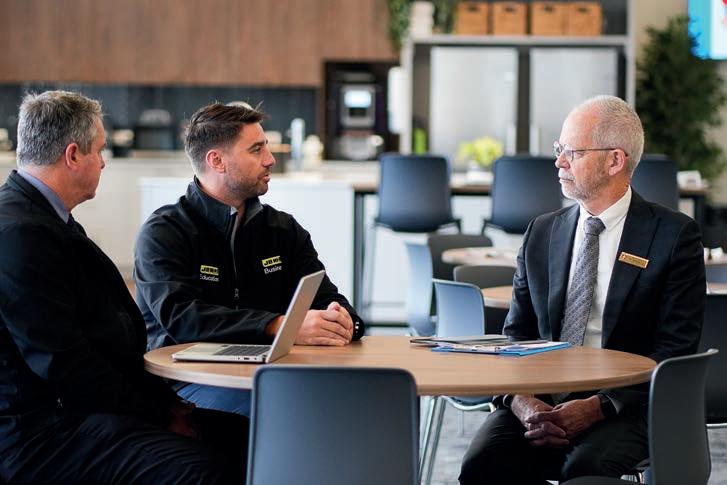
A Melbourne-based company is helping students explore innovative career paths without the cost and logistical barriers associated with traditional school excursions.
Donning virtual reality headsets in schools across Melbourne, students are exploring more than digital landscapes – they're investigating the future of their potential careers. Apsis VR is leading the way.
“Our state-of-the-art technology and expertly designed VR content which includes games, escape rooms and educational content ensure an unforgettable experience for students above the age of 10 and ideally suited for secondary students,” Apsis VR founder Mr Ajith Ratnarajah says.
Apsis VR is now bringing immersive technological experiences directly into school halls, transforming how students understand emerging career opportunities.
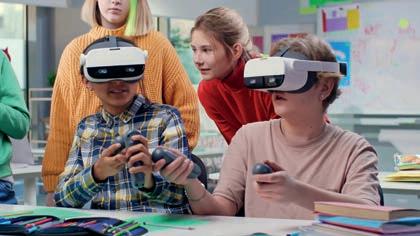
"We're taking our VR venue to the school. Schools don't need to build labs or organise excursions with complicated logistics. They just need to provide a hall, and we set up a complete VR operation for a day or even a week,” Mr Ratnarajah says.
The week-long VR events represent a comprehensive approach to learning. Students experience not just virtual environments, but guided discussions about technological innovation's impact on future careers.
"We break classes into groups and ask them to consider how AI and VR might change particular jobs in the future," Mr Ratnarajah explains.
What makes these sessions truly innovative is the immediate re ection process. "When they come out of the VR experience, they're highly excited," he says.
"We're immediately channelling that excitement to focus on how these experiences might apply to their future lives."
The results have been remarkable.
Students have demonstrated extraordinary insights into potential technological applications. One student proposed using augmented reality and AI for medical diagnostics, suggesting that future technologies could analyse bodily symptoms with unprecedented precision.
Another student explored geological applications, imagining how future Google Earth technologies might provide rich information about soil structures. "I was surprised by what students have said," Mr Ratnarajah says. "Sometimes they propose ideas we ourselves never considered."
The mobile VR approach offers newfound exibility for schools. Rather than organising costly excursions, schools can now access cutting-edge technology within their own facilities.
"We give schools an option where they can run through VR with hundreds of students during a week-long event,"

Mr Ratnarajah says. Crucially, the program goes beyond technological demonstration. It provides genuine career guidance.
"We talk about university courses, what universities are doing in VR and AI,” he says.
"We're providing critical information, especially for students in Years 10 and 11 who are figuring out their future.
The training component adds another layer of innovation. Apsis VR doesn't just deliver a one-time experience but offers schools the opportunity to train their own IT staff.
"Initially, our Game Masters go to the schools to set up the VR in the hall, or allocated space," Mr Ratnarajah says. "But we're happy to train school IT personnel to administer the setup themselves."
Students particularly appreciate the program's forward-thinking approach. By combining immersive experiences with guided re ection, the sessions help students connect technological possibilities with their personal aspirations.
"The discussions afterwards are more beneficial than the R experience itself. We're helping students understand how they might apply these technologies in their future careers,” Mr Ratnarajah says.
The program covers diverse fields, from creative industries to scientific research. Students explore potential applications in medicine, geology, engineering, and beyond. "It's about showing them that technology isn't just about gaming," he says. EM


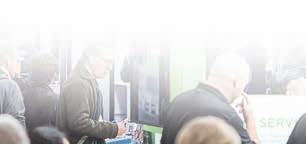


Networking and evaluating new products and services are among the top reasons for a strong turnout at Australia’s largest conference and exhibition for educators.
EDUtech Australia’s return to Sydney this year has garnered strong local support, with the majority (72 per cent) of the event’s 10,374 registered attendees coming from New South Wales.
Ten per cent were from Victoria, seven per cent from Queensland, with the remaining states and territories making up another seven per cent. Four per cent of visitors were international, including a group of 18 principals from Papua New Guinea.
Taking place at the International Convention Centre Sydney on 11 & 12 June, this year’s event featured 345 speakers, 220 exhibitors, 253 practical sessions and 48 start-ups.
“With thousands of passionate educators, leaders, and technologists onsite, the event buzzed with fresh ideas, from keynote sessions like Sal Khan on A in education, to a dynamic expo oor featuring hundreds of edtech solutions and start-ups,” the event organiser said.
The opportunity to evaluate new products and services side-by-side, meet and connect with existing suppliers, and establish future business opportunities were among the top five reasons cited for visiting the expo.
Almost a third of attendees (31 per cent) were prepared to spend between $100-500,000, 26 per cent were prepared to spend $1-5 million, and 11 per cent were prepared to spend $11 million on products and services displayed on the expo oor.
The top five products and services attendees were most interested in (in descending order) were teaching aids, ICT, data and analytics, digital curriculum, and
consultancy and support services.
All sectors of education were represented, with the most registered attendees from the K-12 education sector (23 per cent), followed closely by Higher Education (21 per cent) and non-teaching (20 per cent).
Government schools (2,189), Catholic schools (823), Independent schools (2,013) and Higher Education institutions (2,817) were all represented across registered attendees.
In terms of job function, 31 per cent identified as academic leaders and professional educators, 29 per cent as strategic leadership and executive decisionmakers, and 22 per cent as business, operations and institutional management.
The NSW Government booth on the expo oor hosted the signing ceremony for a new international partnership between NSW EdTech ebilities and India’s Rabbitt AI.
The ceremony took place as part of Study NSW’s four-day NSW EdTech Summit (10–13 June) that shone a global spotlight on NSW’s world-leading education innovation.
With more than 10,000 visitors ooding into the event, Mr Toshi Kawaguchi, Director of International Education and Study NSW, said momentum is building — and so are the connections.
“A standout today was hosting the signing ceremony for an exciting new international partnership between NSW EdTech ebilities and India’s Rabbitt AI. [It is] just one of the many new ventures and collaborations emerging from this week that are helping take the best of NSW
education and technology to the world,” Mr Kawaguchi said.
NSW Government Parliamentary Secretary for Trade and Small Business, Ms Emily Suvaal, noted in her opening address that EDUtech 2025 presented the perfect platform for sharing innovation.
She noted that online learning has surged in the past decade, with growth set to continue in an era of global learners.
“In NSW, we welcome more international students that any other state or territory,” she said.
Ms Suvaal said the NSW Innovation Blueprint 2035, released earlier this year, is designed to give NSW the leading edge to attract talent.
“The future of education is being shaped right here,” she said.
Keynote speaker Mr Sal Khan, CEO of Khan Academy, returned to the stage for his second consecutive address at EDUtech.
Speaking about the rise and reach of AI, Mr Khan noted that the 2024 Nobel Prize in Chemistry was awarded to two researchers for developing an AI algorithm that solved the 50-year protein structure prediction challenge.
We’re definitely living in a science fiction book, Mr Khan said, as he told the audience about the origins of Khan Academy and new innovations in the pipeline, including Khan Academy Classroom, a tool which will “take the cognitive load off the teacher”. EM
Save the date: EDUtech Australia 3 & 4 June 2026, ICC Sydney







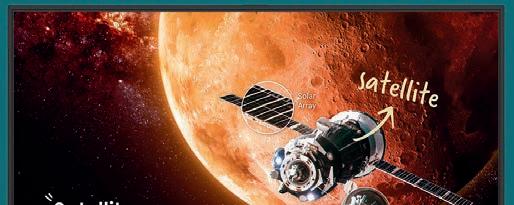






















































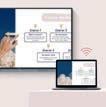



Designed with a deep understanding of the operational and local needs of Australian schools, Compass continues to evolve with new tools and functionality to support all areas of school life.
Trusted by over 3,000 schools across Australia, Compass enables leadership teams and educators to work more efficiently, keeps communities engaged, and supports student outcomes. The platform connects every part of the school community by bringing them all together into a single system, helping schools operate with greater clarity and confidence.
As demands on schools continue to grow, many are navigating increased administrative complexity, high expectations from families, and a mix of digital tools that don t always work well together. Backed by ongoing product investment of over $20 million each year, Compass offers more than 50 modules that support deeply layered attendance, teaching and learning, wellbeing pastoral care, jurisdictional reporting, general finance, communications, enrolments, alumni and much more. Modules are designed to work together, creating a highly exible system that can be tailored to the specific structure and evolving needs of the school.
School leaders use Compass to surface real-time insights into academic performance, student wellbeing, enrolment demographics and more. As a single source of truth across all school data, Compass helps support evidence-based decision-making. Teachers enjoy simplified administration tasks, easily managing work ows and gaining time back to focus on students.
More than two million parents in Australia use Compass to stay informed and involved in their child’s education. Families can access updates, communications, academic reports, manage payment and consent for events and excursions, and obtain attendance data easily via the portal and native mobile app. Students also benefit from direct access to their schedules,
assignments, assessments, homework, and teacher feedback, as well as receive communications at a personal, cohort or class level.
Attendance rolls can be marked from smartphones or tablet devices using Compass' native Android and iOS apps. Schools can choose the roll marking method that best suits their timetable and structure including period-by-period, cross-period, half-day, or full day roll marking and apply attendance rules based on the type of class or activity.
Compass’ wellbeing module, Chronicle, not only records and tracks behaviour, pastoral care, sick bay visits, NCCD and individual learning plans. t also tracks tiered academic recognition via a points system and manages work ows to automatically notify relevant staff to an observation or incident, communicate with parents, add a student to a school activity automatically and re ect this in the student’s schedule. Schools can customise forms and work ows to re ect their own wellbeing and behavioural frameworks.
Bringing together attendance data, wellbeing, academic analytics and more, Compass’ data visualisation platform, Pulse, centralises key school data into customisable dashboards with hundreds of configurable widgets contextualised to various users across the school based on role or desired content.
With a robust AP library, Compass offers schools the exibility to further utilise the platform based on their specific needs, including integrating with other best-of-breed software or existing ecosystems.
New modules
Compass’ latest module developments streamline administration across general
financial management, enrolments, and alumni engagement and fundraising.
CompassFMS is a fully incorporated financial management solution. Schools can manage budgeting, invoicing, purchasing, assets and debtor communication from within the platform. Live financial data is available across a range of reporting views, including cash ow, general ledger accounts, and balance sheets. With simple filtering, financial reports can be tailored, eliminating the need for external systems or manual reconciliations.
Enrolments Pro provides a modern experience for prospective families across both mobile and desktop. The platform supports self-service expressions of interest, applications, online payments and digital signature collection, making the enrolment process simpler for families and more efficient for staff. The module recognises where a family has students at the school and pre-populates data for new enrolments, saving parents time.
Admissions teams can quickly track applications, arrange interviews, handle waitlists and ranking and send automatic communications, streamlining the enrolment process.
Compass Alumni and Donations enables schools to maintain engagement with former students. Students can be seamlessly transitioned to alumni profiles, allowing continued communication and long-term relationship building through the same platform that supported their learning. This module also provides a way to manage donations and fundraising with the school’s alumni community. EM
For more information or to book a demo, contact the Compass team.


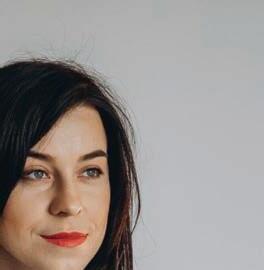
Compass empowers independent schools to focus on delivering exceptional education.
Our cloud-based school management platform connects every stage of the journey — from enrolments to alumni — through a custom-branded portal and mobile app that keeps your entire school community engaged.
Compass streamlines communication, operations, and schoolwide coordination—supported by integrated reporting and insights to inform confident decision-making.



With incorporated finance, Compass brings invoicing, budgeting, and reporting into one place, giving your team clarity, control, and confidence.
Developed locally and shaped by educator insights, Compass delivers flexible, tailored solutions for independent schools.
With a dedicated Customer Success team and fast, local support, you’re backed by a partner that understands your needs.



Compass is trusted by over 800 non-government schools across Australia — and built for every part of the education journey.


Integrating curriculum-aligned content with real-time assessments, Looping's immersive experiences naturally support secondary-school learning environments, making classroom content more engaging.
The first time Ms Tania Hamad donned a virtual reality ( R) headset, she experienced a moment of technological revelation that would ultimately reshape her approach to education.
was just blown away, she recalls. couldn t understand how wasn t actually there. t was so immersive.
That initial experience of virtual transportation of feeling completely present in a digital environment became the spark that would ignite Looping, an innovative virtual reality platform set to revolutionise how students learn.
Created by Ms Hamad, Looping s core innovation lies in providing deeply immersive experiences students literally cannot get any other way placing them directly into realistic historical settings as if physically present, visually exploring molecular structures at microscopic levels, virtually transporting them to remote geographic locations, or safely navigating realistic social and emotional scenarios.
What distinguishes Looping beyond its adaptive A technology is that it integrates built-in assessment directly into the immersive experience itself.
Unlike other R platforms that primarily provide interactive scenarios or experiences, Looping actively captures and provides meaningful assessment evidence mapped directly to curriculum or specific learning outcomes, Ms Hamad says.
The platform provides real-time, personalised feedback, rephrasing questions and offering several attempts to ensure comprehensive understanding.
f a student is unable to answer a question, it adapts with different learning

easily access and review the assessment outcomes, feedback, and video recording separately, simplifying validation and significantly reducing administrative burden, Ms Hamad says.
The immersive nature of R offers unprecedented student engagement.

approaches, Ms Hamad says. t will rephrase, recontextualise, and provide multiple attempts until the student reaches competency.
Students can enter a full science lab or be immersed in ancient Greece, building knowledge week-by-week, she says.
Critically, the platform integrates seamlessly with existing learning management systems (LMS), providing comprehensive feedback for educators. Teachers receive detailed reports highlighting student strengths and areas requiring additional support, effectively reducing administrative burden while enhancing personalised learning.
Looping automatically captures assessment outcomes whether students achieved specific tasks, understanding levels, attempts required, etc and a full video recording of each student s immersive interaction. These ow directly into the school s LMS. Teachers can then
Research has shown R learners can absorb content roughly four times faster than traditional classroom delivery, and learners often demonstrate significantly higher confidence and deeper comprehension, Ms Hamad says.
By creating intense, interactive experiences, the technology transforms passive learning into active exploration, applicable to primary and secondary education, professional development, and critical safety training.
t can provide life-like environments which would otherwise be unsafe or pose significant risks, Ms Hamad says.
Schools can use it to simulate scenarios involving emotional intelligence, anti-bullying strategies, or mental health support in a safe, yet realistic environment .
Students and teachers can experience and learn from challenging scenarios without real-world consequences, Ms Hamad says, highlighting the platform s capacity to turn almost any educational content into realistic, immersive experiences that genuinely engage students, support teachers professional development, and adapt exibly across diverse school curricula.
Learning is a continuous loop, and now we have the technology to make that loop truly dynamic, engaging, and meaningful, Ms Hamad says. EM






At Fujifilm, we are committed to revolutionising education through our cutting-edge technology and innovative products. From cameras to projectors our solutions empower students and educators alike to explore, create, and learn in exciting new ways. Discover how Fujifilm is transforming the educational landscape with our innovative, market leading products and unrivalled expertise.
Try unlocking the full potential of learning with Fujifilm.
3 YEAR WARRANTY ON CAMERAS AND LENSES
Peace of mind with our service centre based in Sydney.
FUJIFILM PROFESSIONAL SERVICES

Ask us how your school can qualify for this service, free of charge.

COMMERCIAL PRICING
We take the worry and stress out for students and professionals.
DEVICES FOR EDUCATIONAL PURPOSES

Cameras, Projectors, CCTV and more.




Scan the QR code to learn more about our products and get in touch with us


Al Noori Muslim School in southwest Sydney is partnering with BenQ to implement innovative interactive panels that enhance teaching and student engagement from Kindergarten through to Year 12.
Celebrating its 42nd anniversary this year and recognised as the first slamic school in New South Wales, Al Noori Muslim School has embarked on a significant journey of digital transformation that is reshaping the learning landscape.
Spanning a single campus in Greenacre with over 2, 00 students from K-12 and 1 0 staff members, Al Noori is a pioneering force in modern learning.
We re more than just a school, says Ms Joumana ennaoui, irector of Education, we re a community committed to excellence.
Operating as an independent, NESAregistered institution, the school delivers the standard New South Wales and HSC curriculum with a twist an extra hour of daily instruction dedicated to Arabic or slamic studies.
The school s academic rigor is evident in its consistent performance, ranking in the top 0 for HSC results. Operating from 00am to 4 00pm, the extended day allows for comprehensive learning that integrates both traditional academic subjects and cultural studies.
With a highly selective admission process, Al Noori attracts top students through entrance tests for key entry points in Kindergarten and ear , ensuring a competitive and academically focused student body.
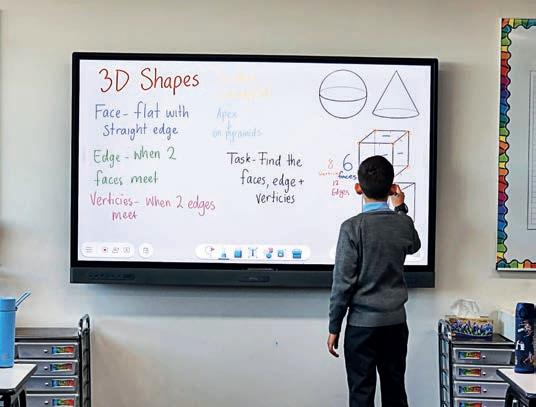
critically examine how technology could support more dynamic, student-centred learning experiences. For Al Noori, this meant leveraging digital technologies to create more interactive, collaborative classroom environments.
The school s digital transformation began in 201 with the catalyst being the Association of ndependent Schools of NSW, esigning for eep Learning nitiative. nspired by educational thought leader Michael Fullan, the initiative represents a transformative approach to education.
This vision set the stage for a transformative partnership with BenQ that would fundamentally change how teaching and learning occur.
Mr Bilal Taha, the school s Chief Technology Officer, recalls the meticulous process of selecting the right technology. The search wasn t merely about replacing the school’s obsolete projectors and
for the long term, he says.
The solution emerged in the form of BenQ s RP Pro Series interactive panels a technology that has now been deployed across nearly 100 classrooms, libraries, and meeting rooms.
What distinguished these panels was their seamless integration with the school s existing Microsoft ecosystem, Mr Taha says.
We are a Microsoft school, so we wanted something compatible with our system. The single sign-on feature was critical for us.
The interactive panels have turned traditional teaching paradigms on their head.

The RP Pro Series 4K screens provide a cinema-like experience for every lesson, while features like nstaShare allow effortless content sharing.
Students can easily project their session when it's their turn, without the usual technical hassles of USBs and plugging things in, Ms ennaoui says.
For teachers, the transformation has been revolutionary, she adds.
They have absolutely loved it. t s simplified their workload and made the classroom more engaging. t s become a student-centred classroom, and they feel less pressure on themselves.
They love the 4K screen. When you have a whiteboard and whiteboard markers running out, they never have that problem anymore. They don t have to plug in speakers when they want to watch a video.
Remote learning capabilities have been particularly transformative for students.
f students are sick or away, they can virtually attend classes, Mr Taha explains. Teachers can share the entire lesson. Students can view everything happening on the board, and even contribute via the E yWrite feature.
For CT staff and the school executive, BenQ’s device management system has been a game-changer. nstead of manually walking around the school to ensure equipment is turned-off at the end of the day, they have control at their fingertips without needing to leave their desks.
At 4 0pm, can see who s online, who s of ine. can even turn off panels for teachers who might have forgotten, Mr Taha says.
This level of technological integration extends beyond convenience it s about creating a more efficient, secure educational environment. The panels integrate with Microsoft 6 , providing robust data protection.
Teachers using One rive can be assured of secure access. f they leave the school, they won't be able to access the data without proper authentication, Mr Taha says.
The investment has been strategic and measured, with the school implementing the technology in stages, initially starting with 1 BenQ RP Pro Series panels.
Budget-wise, we worked to prioritise classrooms that needed replacement, he says.
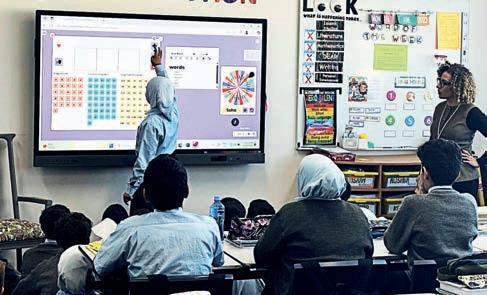

t was more like a pilot for us. Once we were satisfied, we started to roll it out over four stages, with 100 panels ultimately installed.
Mr Kevin Ly from BenQ sees the partnership as more than a technology sale.
We re a global company with innovative solutions, he says. The company has even developed unique software for slamic schools, including a notification system for prayer times, demonstrating a deep understanding of specific educational needs.
Looking forward, the school continues to
explore innovative technologies. t’s currently investigating BenQ s desktop screens with health-conscious features, including blue-light control and icker screen technology to help reduce eye strain.
For the school leadership team, there is no doubt that Al Noori’s classrooms have become a student-centred learning space.
The panels have made life so much easier. t s become less about the technical stuff and more about creating an engaging, collaborative learning space, Ms ennaoui says. EM
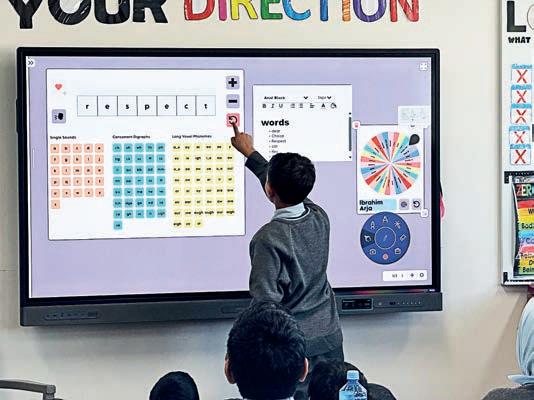












You don’t just learn it. You Loop it.































Plan your 2026 lesson delivery with full-term VR immersive learning modules. Curriculum aligned and mapped, integrated assessments, and purpose-built for the classroom.
Looping is an immersive VR platform where students interact, respond, and demonstrate skills — all within the headset.
Powered by adaptive AI and the Assessment Convergence Model™, each experience blends learning, interaction, and evidence collection in one seamless flow. Immersive Learning Modules run across a full term (around 10 × 30-minute sessions), aligned to curriculum outcomes with assessment built-in.
Mapped outcomes. Captured evidence. No extra admin. No complex setup. Optional VR hardware plans available.




Powerful, authentic learning. Meaningful assessment. Real-world outcomes.
From just $5 per student per week. Get ready for 2026. Secure your full-term modules today.
Email. hello@looping.au
Phone. 1800 956 956 Visit. looping.au

Western Sydney University's School of Humanities and Communication Arts has revolutionised its photography program by partnering with Fujifilm, introducing cutting-edge cameras to enhance student learning experiences.
In the ever-evolving landscape of photographic education, Western Sydney University has found a dependable partner in Fujifilm, reimagining its approach to visual arts training through strategic equipment integration and innovative technology.
Mr Tod Clarke, Senior Technical Officer in Photomedia at Western Sydney, says the university s relationship with Fujifilm dates back to 2021, when it released the Fujifilm GF 100S.
The university’s academic program has changed over the years and the demand for large format technical cameras had reduced, while the need for medium and small format digital cameras has remained, Mr Clarke said.
The high cost of digital medium format capture systems, until recently, provided a high barrier to entry to justify purchasing. As a result, our program had been without a digital medium format solution for some time.
He describes the Fujifilm GF 100S as a suitably highly specified medium format camera with a 10 MP sensor with a SLRlike feel.
The best attributes of this camera release is the image quality, handling and that Fujifilm was able to bundle this in a very affordable package. n every aspect this was exactly what the photographic department had been looking for. Students can now access the GF 100S system on demand within the studio environment, he said.
n 2022, the department decided to move to a quality mirrorless system to replace the mixed and aging eet of APSC

In-body image stabilisation and lens aperture ring control are key features of the X-S20.
and Full Frame SLR’s which had served the school extremely well.
The transition wasn't just about upgrading equipment, but addressing fundamental educational needs
The department required a versatile, small form factor device with a range of the latest technology and features including the capacity to offer excellent still and motion capture and be part of a comprehensive system of high quality and affordable optics, Mr Clarke said.
The introduction of the Fujifilm -S20 in mid-202 marked another significant milestone.
Other comparative models did not meet the device or system requirements as well as the Fujifilm -S20 for our design program, Mr Clarke said.
This -Series platform complements the medium format GF System, allowing students to transition easily between the two.
Attractive features of the X-S20 include in-body image stabilisation, lens aperture ring control and higher specified battery for over 00 frames, depending on settings.
Both the GF System and -Series cameras have seamlessly integrated into the university s studio environment. They synchronise easily with the studio's electronic and battery-powered professional lighting systems, Mr Clarke explained, highlighting the technical compatibility that makes these cameras ideal for educational settings.
What set Fujifilm apart was not just its technology, but its comprehensive support.
found the team from Fujifilm were very approachable and responsive, Mr Clarke said. The presence of a local Sydney-based service centre was crucial, ensuring quick turnaround times for repairs and maintenance.
For other educational institutions considering similar upgrades, Mr Clarke offers a compelling recommendation Fujifilm has the expertise to help during each phase of procurement. There are a range of affordable devices, from entry-level, mid and high spec -Series hybrid cameras, through to the highend of the GF System.
The university's professional services relationship with Fujifilm has been particularly valuable.
"We recently had a couple of devices
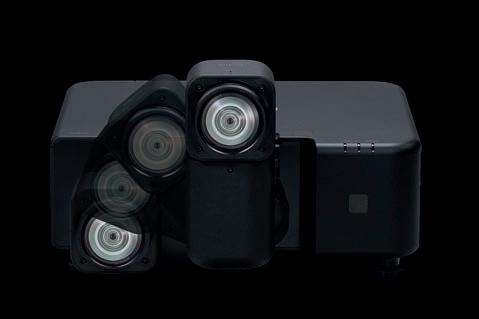
requiring repair, and these were turned around within days," Mr Clarke said, underscoring the efficiency of their support.
The partnership represents more than just a technological upgrade; it's a strategic approach to preparing students for professional photographic practices.
By providing access to cutting-edge equipment and comprehensive support, Western Sydney University is ensuring its students are equipped with the skills and tools needed in a rapidly evolving visual arts landscape.
High performance projector’s immersive capabilities
FUJ F LM Australia has officially launched its UH6000 projector, marking a significant milestone in projection technology.
Released in June, the innovative device is generating interest across multiple industries – including the education sector – for its groundbreaking capabilities.
The standout feature of the ZUH6000 is its unique folded two-axle rotatable lens –an industry-first that allows unprecedented exibility in image projection.
Educators and professionals in art, design, and multimedia can now create complex visual installations with extraordinary ease, projecting high-quality images in virtually any direction.
“By allowing projection in various directions without repositioning the main unit, users can effortlessly display images on walls, screens, ceilings, and oors, a Fujifilm spokesperson said.
ts exible installation options enable users to select the best method for their specific environment, making it possible to utilise previously unused spaces and create
a more dramatic atmosphere. Users can also conceal the projector body, leaving only the lens exposed, to create a more immersive space.
elivering 4K compatible images at 40 x 2160 pixels, the projector sets new benchmarks for image quality. Fujifilm reports the UH6000 achieves approximately 1. times better colour reproduction compared to previous models, with red colour representation specifically enhanced by a two-fold improvement.
The projector is said to generate 6,000 lumens using cutting-edge laser light source technology, ensuring vibrant and clear images across diverse environments. espite its powerful capabilities, the UH6000 maintains a compact design, weighing just 1 . kg and measuring 4 6mm wide, 4 6mm deep, and 1 mm high.
A revolutionary lens shift function offers 2 per cent vertical and per cent hori ontal adjustment, providing unprecedented precision in image positioning, the company claims. The company says this feature eliminates the need for complex physical repositioning, streamlining installation across various settings.
The projector's versatility has already captured the attention of multiple institutions, including schools, universities, museums, art galleries, and entertainment venues for its ability to create immersive visual experiences. EM
Fujifilm is offering comprehensive support packages and training for users looking to maximise the projector's innovative capabilities. For more information, contact Peter Pacevski: peter.pacevski@fujifilm.com

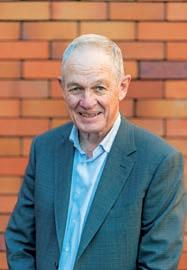

Dr Stephen Brown shares how an unexpected genetic discovery this year prompted him to contemplate the meaning of leadership and legacy.
Dr Stephen Brown is the Managing Director of The Brown Collective, focused on the formation of educational leaders and partnering with schools, networks and system to enable sustainable impact. The organisation reflects both his collective experience over 40 years in policy, strategy and leadership development – and that of the remarkable global network he has developed during this career.
On 5 June 2025, I received an email from a family member informing me that she had discovered a branch of our family tree that we never knew existed. You may say what is so unique or profound about this? There are plenty of people making such discoveries over time.
My sister-in law, Lyn, informed my brother and I that we are related to the former Governor General of Australia, the late William (‘Bill’) George Hayden, AC. He is my late father’s first cousin the first child of my Dad’s Aunty, Violet Brown, who married George Hayden, a US serviceman. My grandfather, James Brown, was my great Aunty Violet’s brother.
Until this date earlier this year, no one in our family was aware of such a connection. I cannot describe the immense pride I feel in having such a linage and heritage. Like so many other Australians, I knew who Bill Hayden, AC was and read years ago his autobiography, Hayden.
After receiving this news, I set about researching his life. When I read the glowing tributes to him in the Hansard of 28 November 2023 after his passing in that year it gave me a greater sense of the impact and legacy of this extraordinary Australian.
He helped lay the foundation of what we value about modern Australia; introducing Medibank this country’s first universal health insurance scheme; a pension scheme for single mothers; a quota for women in parliament; advocacy for same sex couples and countless initiatives to promote Australia’s international interests.
Such a personal revelation and discovery encourages one to ponder the notion and importance of legacy when leading.
What is legacy?
Leadership and legacy are two intertwined concepts that define the trajectory of
individuals, organisations, and societies. While leadership is an active process of guiding, enabling, in uencing, mobilising and inspiring others toward common goals and aspirations, legacy is the enduring impact left behind, an imprint that transcends time and continues to shape the future. Together, they form a powerful narrative about purpose, in uence, and the longterm consequences of leadership actions.
In our roles as educational leaders we are all temporary custodians of the schools and systems we lead. The custodial aspect of school and system leadership is significant. Any decisions taken will have potentially longterm consequences for the future. Legacy is not always positive. History is replete with leaders whose actions have caused harm and division. Many leaders have inherited schools and systems that are operating well but others have found the direct opposite. James Kerr (2013, p.179) evokes us as leaders to be a good ancestor’ we are the stewards of our organisations, the caretakers of our own lineage.
In being responsible stewards of any school and system, leaders need to aspire to leave it in a better condition than they found it. Such a responsibility is a privilege, honour and a weight that bears on any leader. In the fast-paced dynamic of leadership in schools, there is always the challenge to act in the now but with an ‘eye’ to the future.
Many decisions presented to school leaders are technical ones straight forward and an endorsement of a well-known, described approach to a familiar matter or practice. There is little time or need to be contemplative. However, much of the work of school and system leadership involves making choices, responding to ethical dilemmas, implementing policies without any opportunity to in uence or shape and balancing competing perspectives such as the

rights of the individual versus the common good. The work is adaptive: making choices and determinations that will have long-lasting generational consequences.
When I visit a school, I often stop and look at the name plates on buildings, photographs on display in the school foyer, and read the annual school magazine. Why? Such artefacts are the ‘eyes to the soul’ of the school and the contribution made by others to the present school.
School leaders are between the past and the future. They need to duly recognise and respect the past and take up the opportunity along with the challenge of shaping an educational narrative that will ensure its students obtain the best possible educational experiences that will enable their future. School leaders don’t own any school they hold it trust on behalf of others.
Leaders should act in the best interests of others, never in the pursuit of vain glory. The power of any leader’s legacy will be how it has broader benefits and connects with the needs and aspirations of others. Leaders need to have a sense of foreseeability, being able to articulate a collective vision for the future and create school climates that cultivate imagination typified by the wonder of a child and the art of possibility not limited by imposed boundaries.
Realistically, a leader’s legacy will be carried in the heart, heads and hands of others. It is therefore important to invest in the leadership formation of others and be committed to a distributed approach to working. In shaping a legacy sometimes leaders will face opposition and adversarial circumstances that will need to be engaged with, confronted and removed in the spirit of
a foreseen broad benefit. Leaders will need to act with courage and sometimes move through the ‘storm’ and perhaps uncharted waters with self-belief typified by humility, compassion and a desire to contribute to the common good.
Creating a meaningful legacy requires deliberate steps and intentionality. What will your legacy be? Have you considered what it could be n your first or early days in a new position as an educational leader one should contemplate and imagine what your last day will look like? What will people say about you? What is the legacy you will be known for long after your temporary tenure has concluded?
“The rest of the pages are blank. Waiting to be filled. They say it’s time to make your mark, they say. Your contribution. It’s time to leave a legacy. Your legacy. It’s your time” (Kerr, 2013).
Start writing. EM
Queensland's education leaders are transforming school administration, working to reduce red tape and empower teachers to focus more on learning and less on paperwork.
At 11 pm on a Thursday night, a high school mathematics teacher scrolls through yet another email from a parent demanding an immediate response. Her lesson plans sit half-finished as personal time evaporates into another administrative task.
This moment encapsulates a growing challenge facing Queensland's educators – a system increasingly bogged down by paperwork, communication protocols, and bureaucratic processes that steal time from teaching.
Mr Mark Breckenridge, President of the Queensland Secondary Principals Association (QSPA), is at the forefront of a transformative initiative to change that.
"Over the years, principals and teachers would be able to highlight numerous examples of where red tape has just crept in," Mr Breckenridge says. "Increasing paperwork demands, increasing data gathering, increasing need for parental communication – everything has constantly come in over the top."
To understand the context of this initiative, it's crucial to appreciate Mr Breckenridge's extensive educational background. His journey began in the last century as a primary school teacher, navigating the challenges of small, one and two-teacher schools before transitioning to larger educational settings.
"I started my small school principal journey in central Queensland, moving into Prep to Year 10 schools, and then into secondary schools," he says. "I've been a secondary school principal since 2000, working in both regional and metropolitan high schools."
His last role before taking on the QSPA presidency in 2018 was at Ferny Grove State High School, a Brisbane-based public secondary school approaching 1,900 students. This experience provided intimate insights into the mounting administrative pressures facing educational leaders.
In 2024, the incoming Liberal National Party (LNP) of Queensland recognised the growing administrative burden and made an election commitment to reduce bureaucratic processes by 25 per cent.
The LNP came into office at the end of October last year, and one of the first conversations I had with the Minister for Education, John-Paul Langbroek, was very much focused on reducing red tape,” Mr Breckenridge says.
This wasn't just a political promise but a strategic approach to educational reform.
"The incoming government saw a real need to free up school leaders and teachers to do what they should be doing – teaching and leading learning," he says. "They set out a fairly rigorous approach to identifying issues and creating a plan to reduce red tape across four years."
A working group established to address these challenges was deliberately diverse, bringing together representatives from various educational associations, unions, and parent groups. Mr Breckenridge was invited to represent secondary principals, bringing his extensive practical experience to the table.
"There is a genuine commitment to make a difference," Mr Breckenridge says. We all come from a field of practitioners
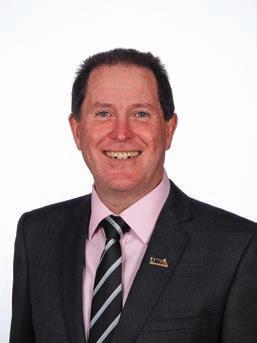
be done.
In May 2025, the Queensland Government announced three major areas of red tape reduction for teachers, delivered as a result of the Red Tape Reduction Working Group: procurement, recruitment, and student management.
The procurement process underwent a significant overhaul, Mr Breckenridge explains. Previously, schools faced rigorous tender requirements for purchases over $5,000. The threshold has now been raised to $10,000, dramatically reducing paperwork for routine purchases.
“The more expensive that item was, the more rigorous the tender process became. With in ation and the increased cost of goods, $5,000 doesn't buy what it did 10 years ago," Mr Breckenridge says. "The department recognised we needed to lift that threshold. Now, layers of paperwork for anything under $10,000 – which is the bulk of school purchases – have disappeared."
Having to chase around and find three quotes can be difficult. t s not so much the reaching out to companies, but it's having those companies reply and to reply in a timely way. There are layers of work that sit underneath this idea of getting quotes.
"$5,000 doesn't buy what it did 10 years ago. The department recognised we needed to lift that threshold."
Mr Mark Breckenridge, QSPA President
We all understand you need a competitive process when using public funds but the threshold of $10,000 is far more realistic.”
This change impacts not just principals, but also deputy principals and business managers who previously spent considerable time navigating complex purchasing protocols.
Teacher recruitment processes have been similarly transformed. The previous system involved multiple bureaucratic steps between schools, regional offices, and central administration, often resulting in delays that could cost schools potential teachers.
"When we are in a teacher shortage, it's important that you take every roadblock out of the way so that a school can talk to a prospective teacher and they can be appointed and start in their role," Mr Breckenridge says.
"Before, it was a fairly convoluted process," he says. "Now steps are being taken to employ teachers faster and more efficiently, reducing the time taken to employ teachers before they are lost to the private system or interstate"
While the initiatives show promise, Mr Breckenridge is pragmatic about the challenges. "We're still a long way from the end of a teacher shortage," he admits. "There are some green shoots, but it only takes unexpected events like someone getting sick or going on leave to create continued challenges for principals."
Perhaps the most innovative approach in Queensland’s reforms is the ‘one student, one plan’ initiative.
Currently, students with special needs or behavioural challenges

The Queensland Government has identified three major areas where it can reduce red tape in schools.
might have multiple, disconnected documentation plans. The new system will consolidate these into a single, comprehensive document.
"Each plan is documented separately and potentially saved in different system locations," Mr Breckenridge says. "We're working to wrap all of this into one comprehensive plan, with dropdown menus and pre-populated data to save significant time for teachers and school leaders.
The working group is also establishing clear communication protocols for parents, recognising the need to set reasonable boundaries for teacher accessibility.
"There's a small percentage of parents who push the limits, emailing at 11pm and expecting an immediate response, or approaching teachers during weekend sports. We need to establish respectful communication boundaries,” he says.
The proposed protocols will establish reasonable response times and communication expectations, respecting both educational professionals and parents.
Looking ahead, the department is exploring centralised responses to legal
information requests, which currently consume significant administrative time.
Principals frequently face demands for historical documentation related to subpoenas, legal claims, and student records that can span decades.
Mr Breckenridge says these requests often require extensive archival searches, from digital systems to physical document storage in school containers.
Queensland’s Department of Education is now developing a centralised approach, where digital information can be quickly retrieved, with minimal disruption to school operations.
"‘When a request comes for information about a student who is at a school or who has left in recent years, the aim is to handle the information retrieval centrally as much as possible," Mr Breckenridge says.
As Queensland continues to refine these processes, the ultimate goal remains clear.
"We want to free up school leaders and teachers to return to the job of teaching and leading learning," Mr Breckenridge concludes. "By reducing administrative burdens, we create more space for what truly matters – education." EM
HP
At HP's (Hewlett-Packard) Sydney head office, a powerful collaboration was ignited as school principals and executive leaders from the nternational Education Agency ( EA) of Papua New Guinea (PNG) came together with education and industry partners.
Representing 1 schools and a TAFE institution, the EA has been a cornerstone of education in PNG for nearly five decades. This visit in June marked a defining moment in their journey, a move to unify and elevate digital education across the country.
As the EA prepares to celebrate its 0th anniversary in 2026, its leadership team has taken a monumental step unifying technology platforms across PNG. ts goal To streamline access, modernise teaching, and empower every teacher and student with tools that are not only reliable and built for the future but centred on educational needs. This includes both the K-12 schools and PNG TAFE, which together represent a critical part of the nation’s lifelong learning infrastructure.
Our collaboration was made even stronger thanks to the incredible work of Miriam Torres from JB Hi-Fi Education, whose team crafted a tailored and holistic solution that meets the diverse needs of the EA community. From device management to classroom integration, the solution is designed to scale and stand the test of time.
To launch this exciting new chapter, we welcomed the EA executive team and 1 of their school principals for a day of professional learning, deep collaboration, and shared vision. A highlight of the
day was having HP Managing irector Brad Pulford join the session to share a global perspective on education and digital equity.
The day wasn’t just about devices or infrastructure. t was a celebration of people and partnerships. Australian education shone brightly not only through the formal presentations and insights shared at the E Utech Australia conference, which the EA delegation attended, but also through the informal moments of connection that sparked throughout the visit. deas owed freely, perspectives were exchanged, and lasting relationships began to form. The spirit of collaboration and shared purpose became the true foundation for future growth.
The E Utech event itself offered the EA team an invaluable window into current trends in education technology. From A in learning to student-led innovation, the principals returned inspired, energised, and better connected to the global education ecosystem.
As Mapi Morea, Principal at Rabaul nternational School, noted Enjoyed the session it s quite ama ing to see how EA can tap into your expertise with the T tools from HP and JB Hi-Fi education solutions.
That sense of collaboration and shared purpose was at the heart of the experience. From discussing strategy to exploring real classroom solutions, the EA team brought passion, professionalism, and a clear vision for their students.
This partnership is ultimately about more than technology. t’s about empowering educators, building digital confidence, and creating sustainable
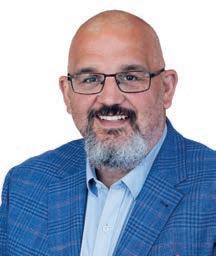
"The day wasn’t just about devices or infrastructure. It was a celebration of people and partnerships. Australian education shone brightly; not only through the formal presentations and insights shared at the EDUtech Australia conference, but also through the informal moments of connection that sparked throughout the visit."
impact. That’s why the next stage of our journey is focused on scaling professional development across the EA network. n the lead-up to the EA’s 0th anniversary in 2026, we’re working together to roll out large scale training programs that elevate digital teaching and learning. Through free online offerings like HP EA ( nnovate, esign, Educate and Act) and the HP A Teacher Academy, we’re enabling educators across PNG to upskill, lead, and thrive in a rapidly changing world.
What began as a visit has grown into a movement, one that promises to redefine education in PNG for the next 0 years. And we’re honoured to be part of the journey. EM
To list an event in our calendar, email rhiannon.bowman@primecreative.com.au
National Science Week 9-17 August scienceweek.net.au
Bullying No Way: National Week of action 11-15 August bullyingnoway.gov.au
Book Week 16-23 August cbca.org.au/cbca-book-week
National Skills Week 25-31 August nationalskillsweek.com.au
2025 APPA National Conference, Brisbane 26-29 August appa.asn.au
National Education Summit, Melbourne 28-29 August nationaleducationsummit.com.au
Literacy and Numeracy Week 29 August – 4 September nationaltoday.com/literacynumeracy-week
NSW Secondary Deputy Principals Association, Tweed Heads 3-5 September nswsdpa.asn.au
Indigenous Literacy Day 7 September nationaltoday.com/indigenousliteracy-day
R U OK? Day 11 September ruok.org.au
Early Childhood Australia National Conference 1-4 October ecaconference.com.au
Earth Science Week 12-18 October ga.gov.au/about/earth-scienceweek
Australian International Education Conference (AIEC), Canberra 14-17 October aiec.idp.com
Media Literacy Week 24-31 October medialiteracy.org.au
World Teacher’s Day, Australia 31 October worldteachersday.edu.au
National Recycling Week 10-16 November recyclingnearyou.com.au/ nationalrecyclingweek




• Innovative products and resources
• Rich content that is highly valuable to education professionals

Contact: Kylie Nothrop 0422 046 299 kylie.nothrop@primecreative.com.au






















Welcome to People on the Move, Education Matters’ bulletin to keep the Australian education sector updated on new appointments and personnel changes.




Experienced educator joins TAFE Queensland Board
Ms Colleen Hope, an educator with over 40 years teaching and school principal experience, including schools specialising in diverse learning, has been appointed to join a revitalised seven-member TAFE Queensland Board. The Queensland Government has revamped the board to deliver on plans to solve the state’s skills shortage.
Image: Queensland Government

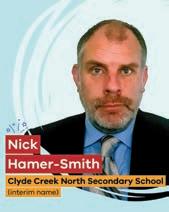



Foundation principal appointed to new school
Mr Nick Hamer-Smith has been appointed principal of Clyde Creek North Secondary School (interim name), opening Term 1, 2026. He has been teaching in government schools for 24 years. Mr Hamer-Smith has been involved in several leadership roles, most recently as co-principal of Glen Eira College, and has studied special needs education.
Image: Victorian School Building Authority


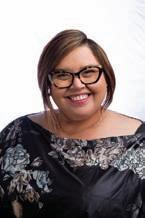
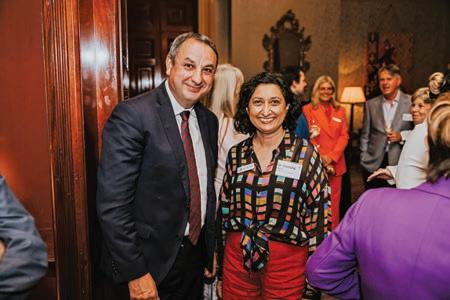
STEPS appoints new Chief Executive Officer
Mrs Cassie Stanley has been appointed CEO of STEPS Group Australia, a training, employment, and support services provider. After a four-year tenure of leading and managing STEPS Education and Training programs, Mrs Stanley brings a deep understanding of the education and community services sectors, paired with a values-driven leadership style and a strong track record of strategic impact.
Image: STEPS Group Australia

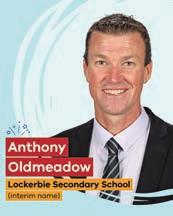


Mr Anthony Oldmeadow has been appointed foundation principal of Lockerbie Secondary School (interim name) in Kalkallo, opening Term 1, 2026. He has held several leadership roles in government schools. While in these roles, he had a strong focus on improving teaching and learning. Mr Oldmeadow is passionate about supporting his students to grow and his staff to work together. He wants to build an inclusive and innovative school where all students can thrive and reach their full potential.
Image: Victorian School Building Authority
and the Cancer Council. Her background spans technology, education, health, environment and community sectors.
Image: Public Education Foundation


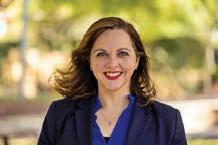


Private girls’ school announces new principal
Ms Sabine Partington has been appointed as the 9th Principal of Lauriston Girls’ School, commencing in January 2026. Ms Partington is currently Deputy Principal (P–12) at SCECGS Redlands, an independent school in Sydney. Prior to Redlands, Ms Partington was Head of Teaching and Learning at Haileybury, where she contributed to exceptional academic outcomes across five campuses and helped launch Haileybury Pangea, the school’s online campus. Her qualifications complement earlier career experience in the federal public service and corporate financial services in both Australia and the UK.
Image: Lauriston Girls’ School
If you’d like to tell the sector about a new person in your school, company, institute or not-for-profit, please send the person’s name, position, image and a short description about their role to editor Rhiannon Bowman for consideration at rhiannon.bowman@primecreative.com.au.

For over 40 years, The Outdoor Education Group has been positively changing the lives of young people by taking learning beyond the classroom.

The experts in residential camps, journeys and bespoke programs. Our programs can be delivered in various locations and at our state residential camps including:
New South Wales
Camp Wombaroo
Bush Camp Biloela

Victoria
Camp Marysville
Camp Jungai
Western Australia
Bush Camp Margaret River


To learn more about our program options and to plan your next outdoor education program, please contact www.oeg.edu.au | enquiries@oeg.edu.au | 1800 880 900

